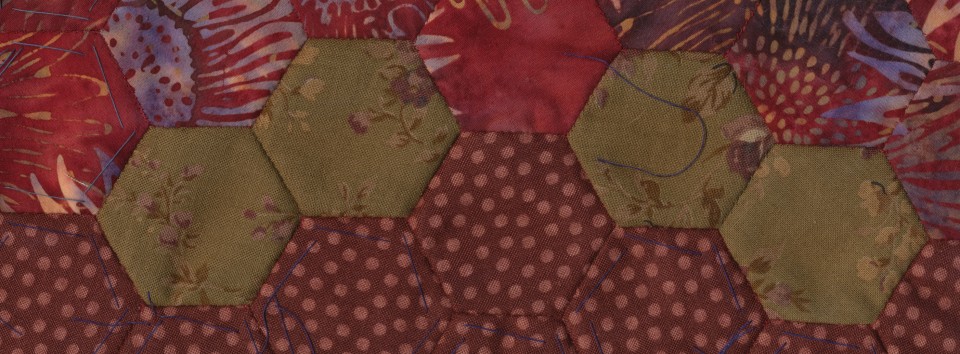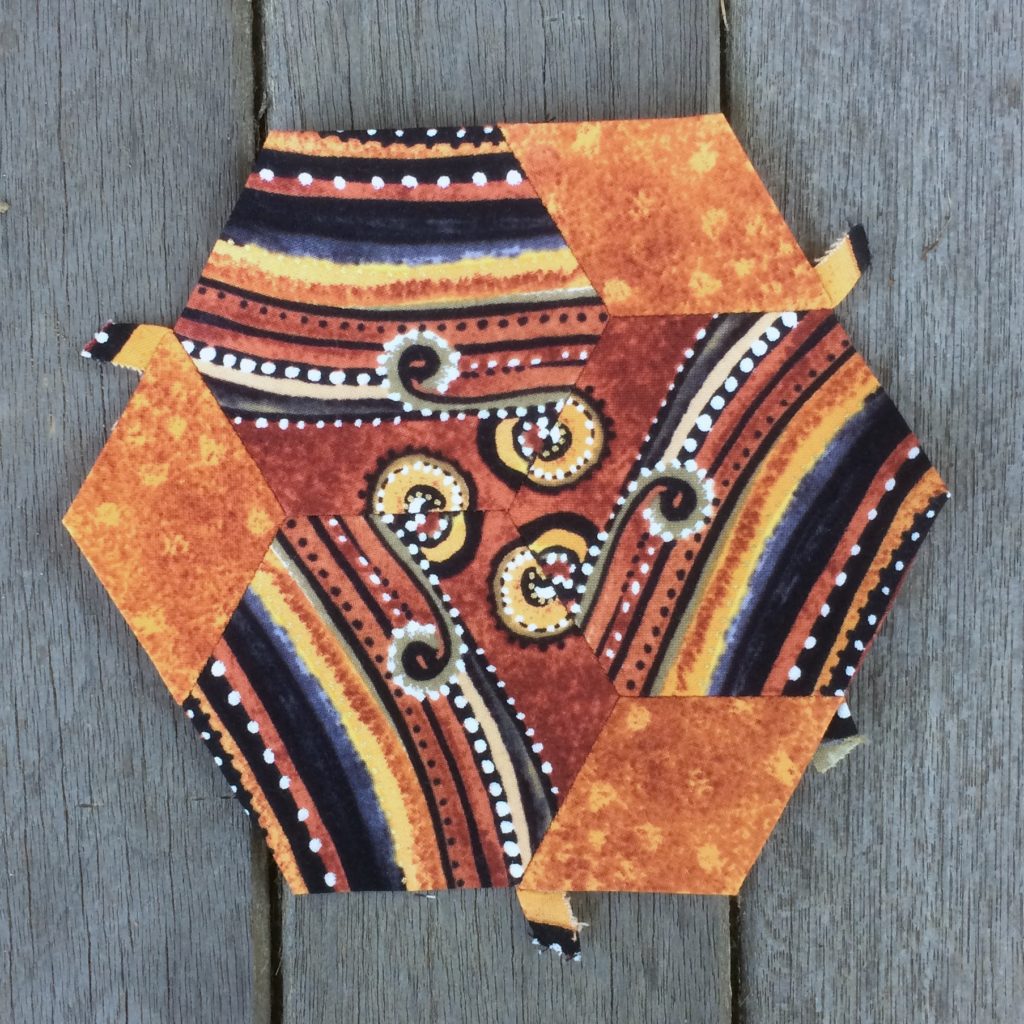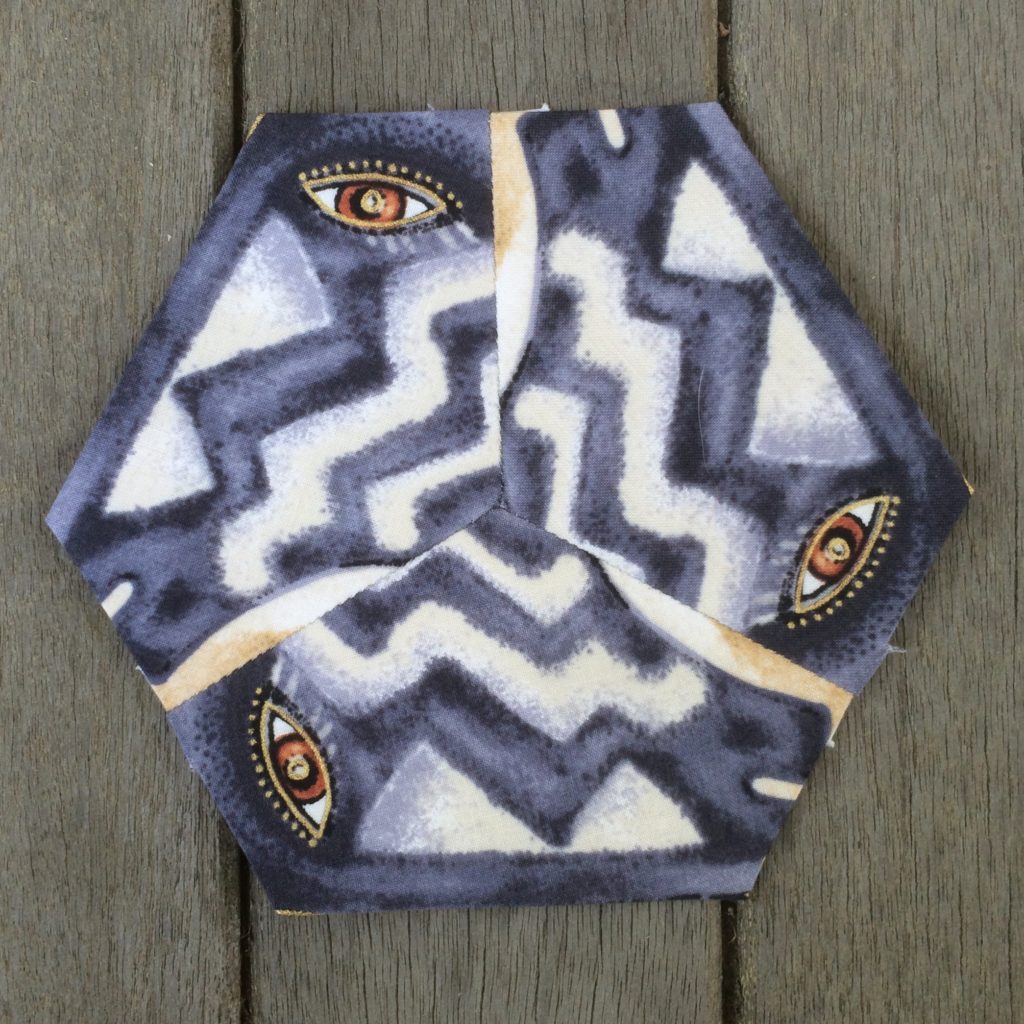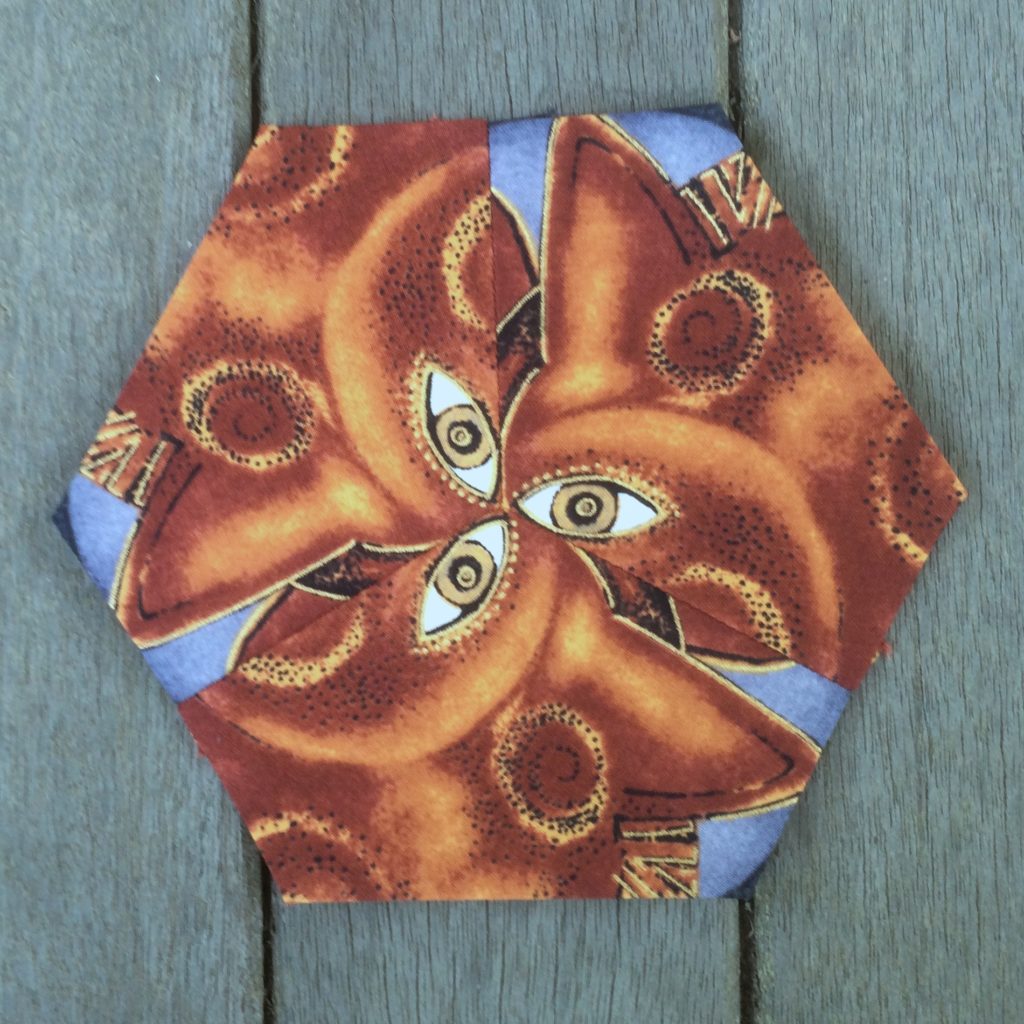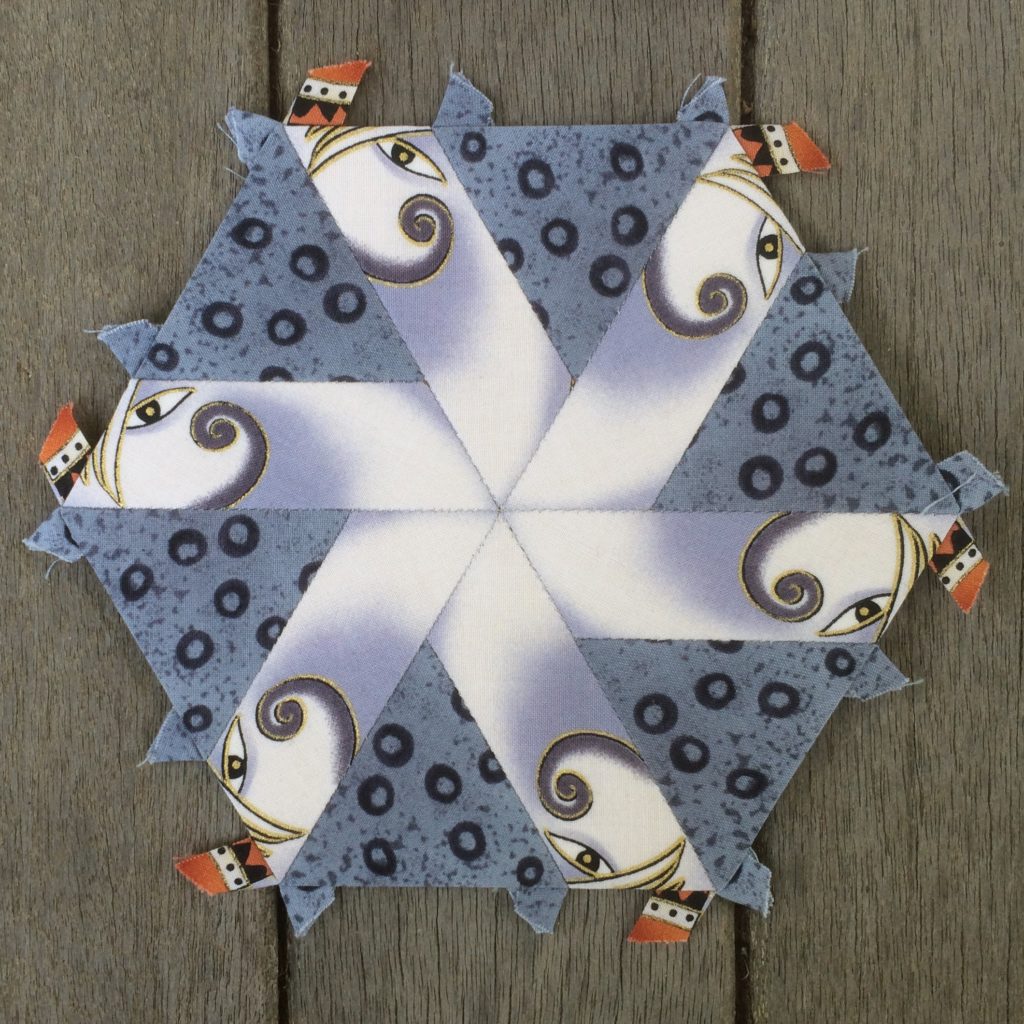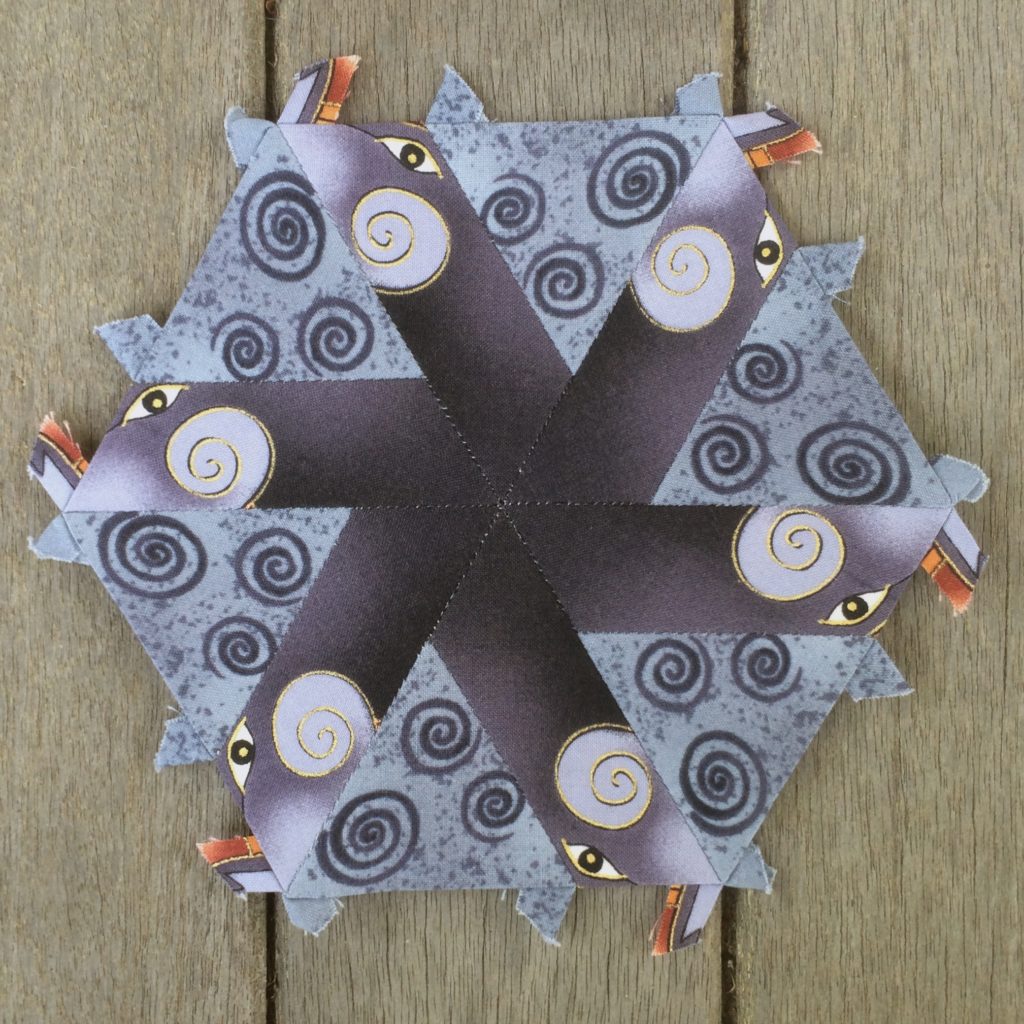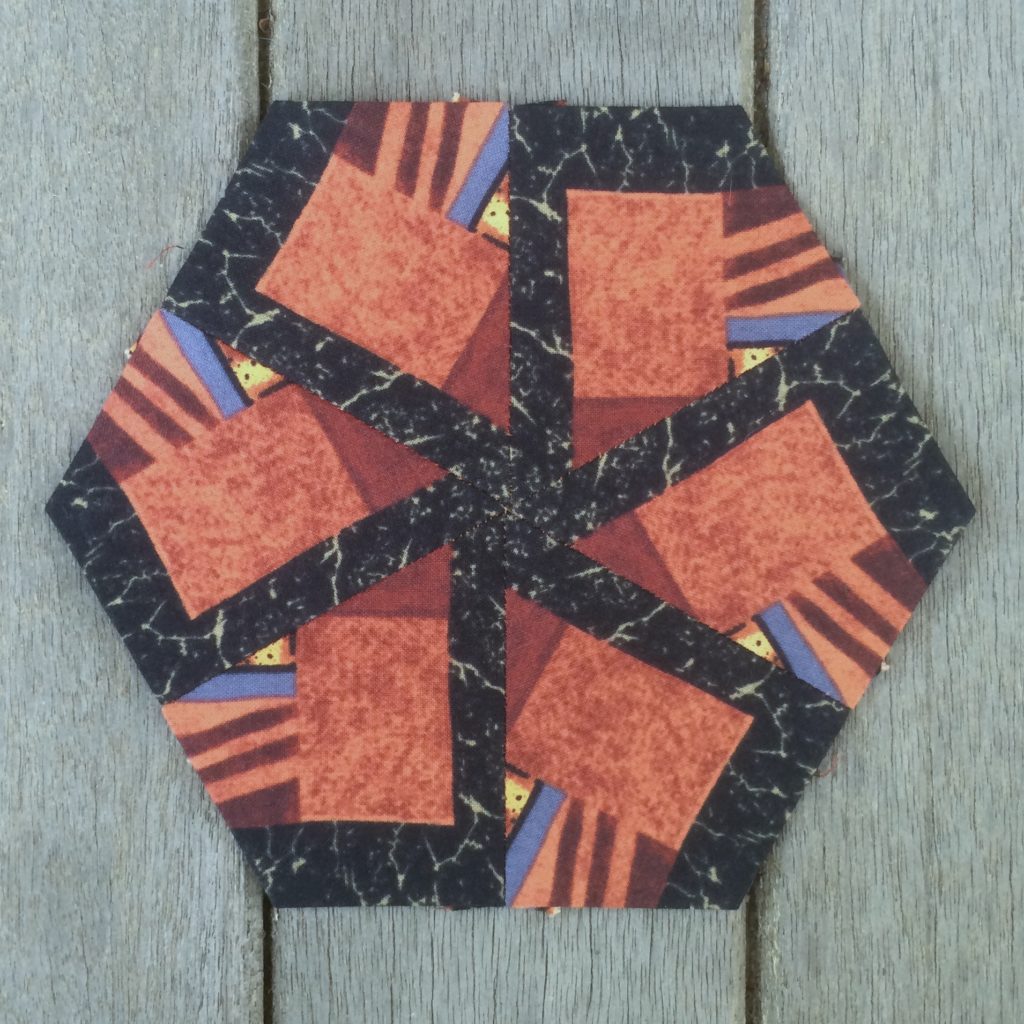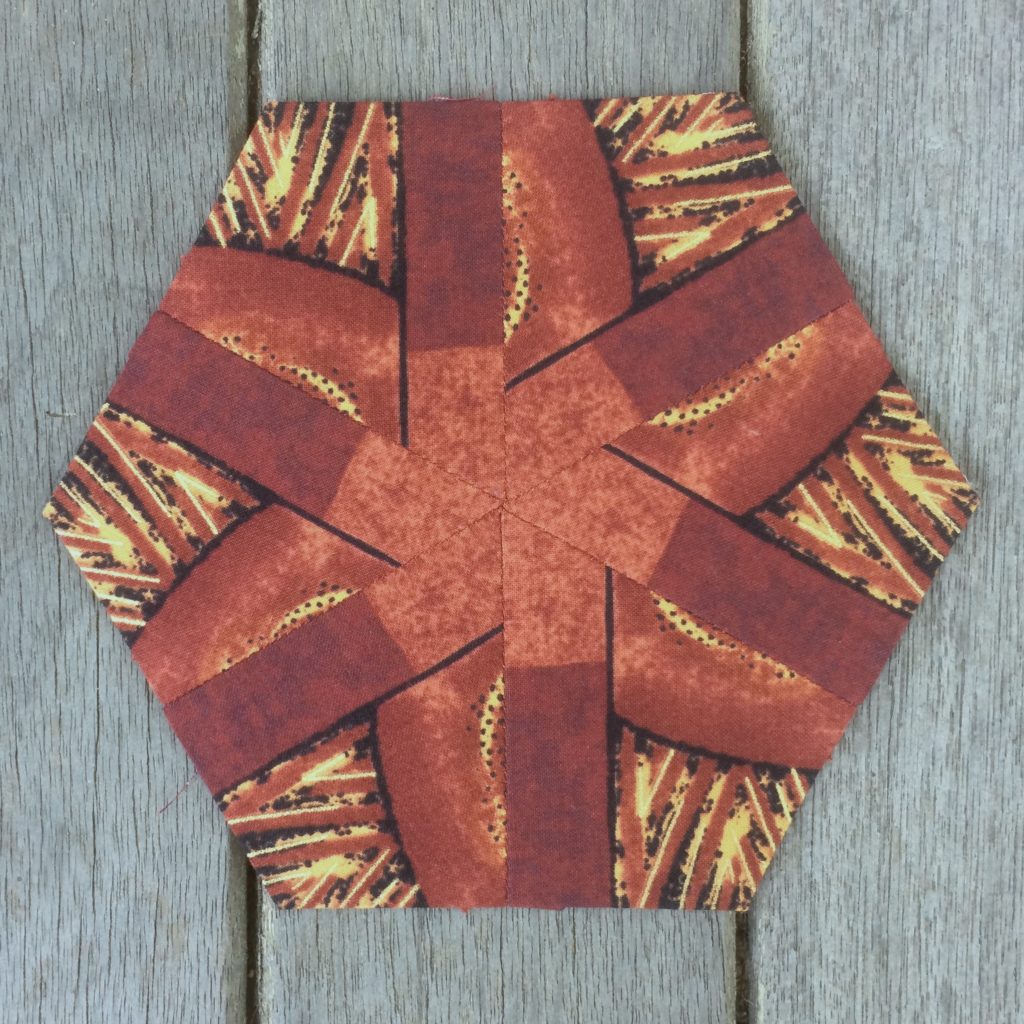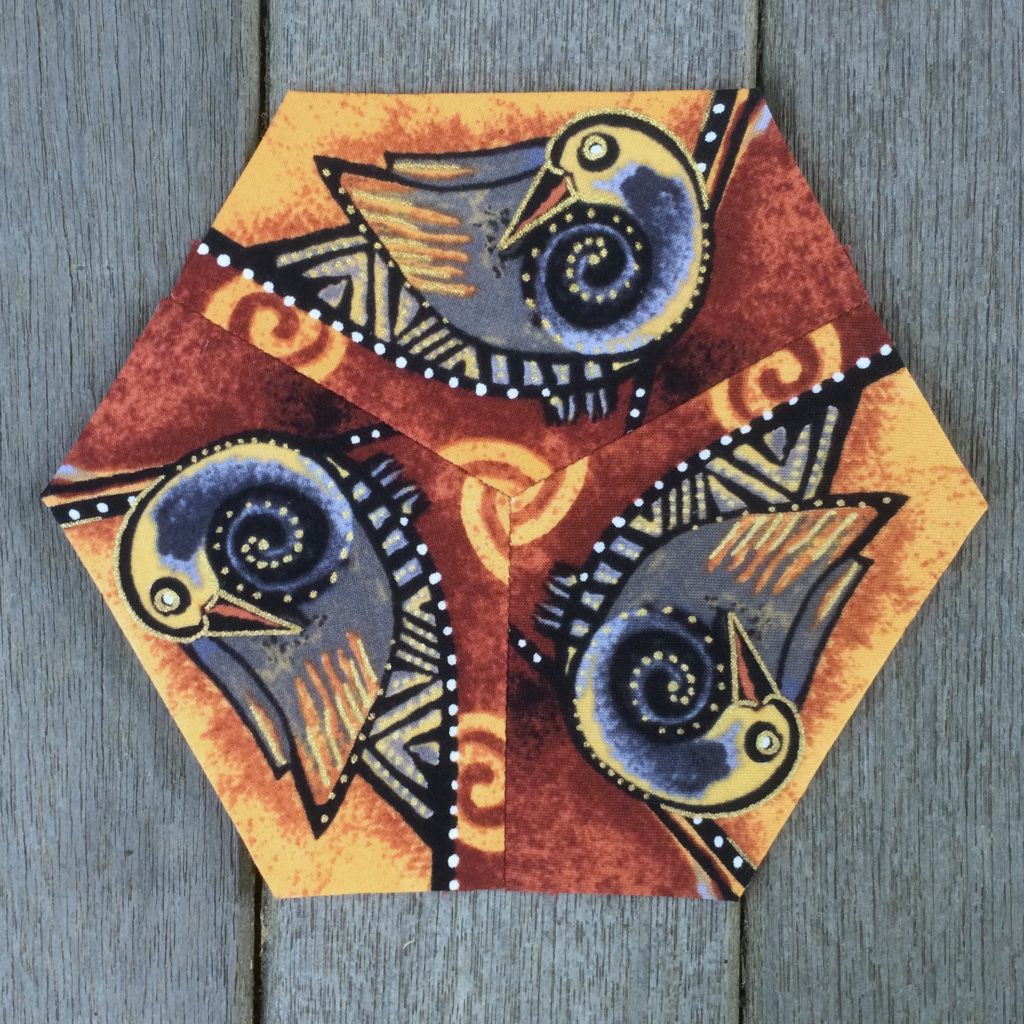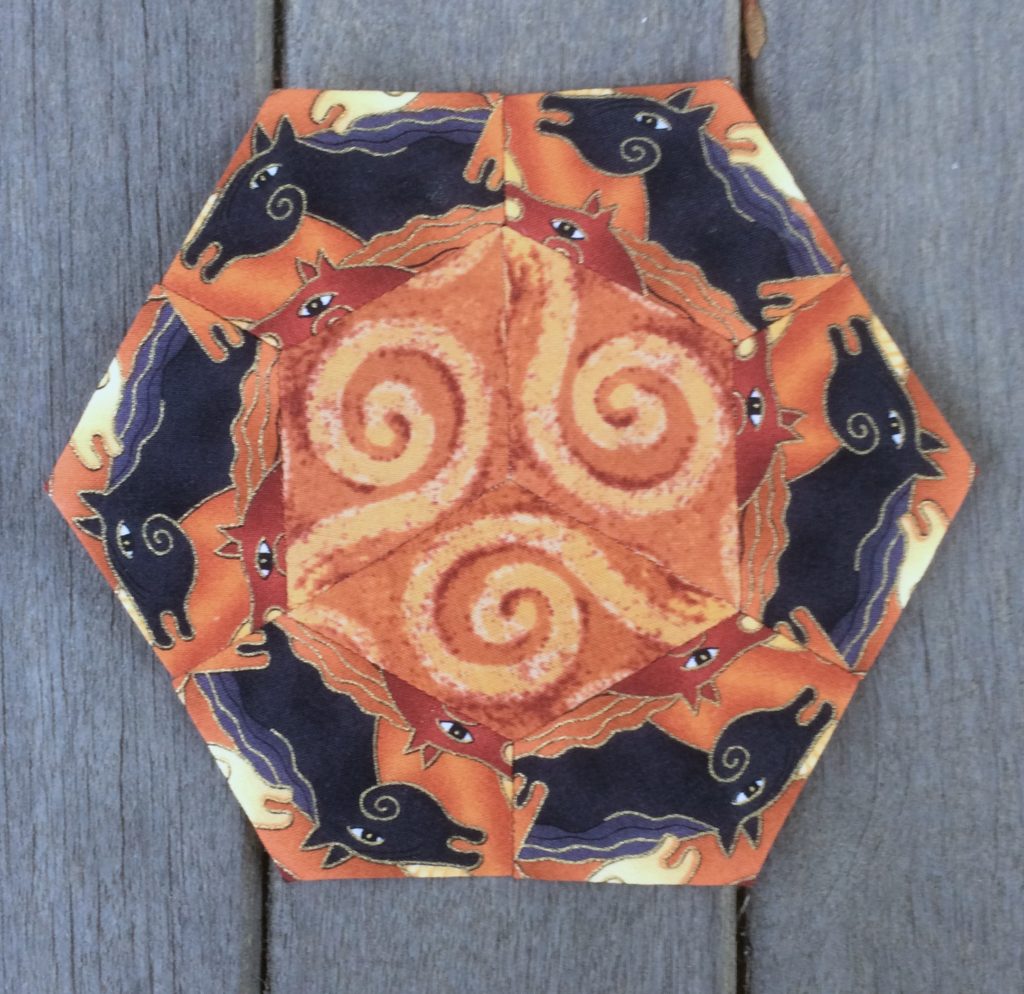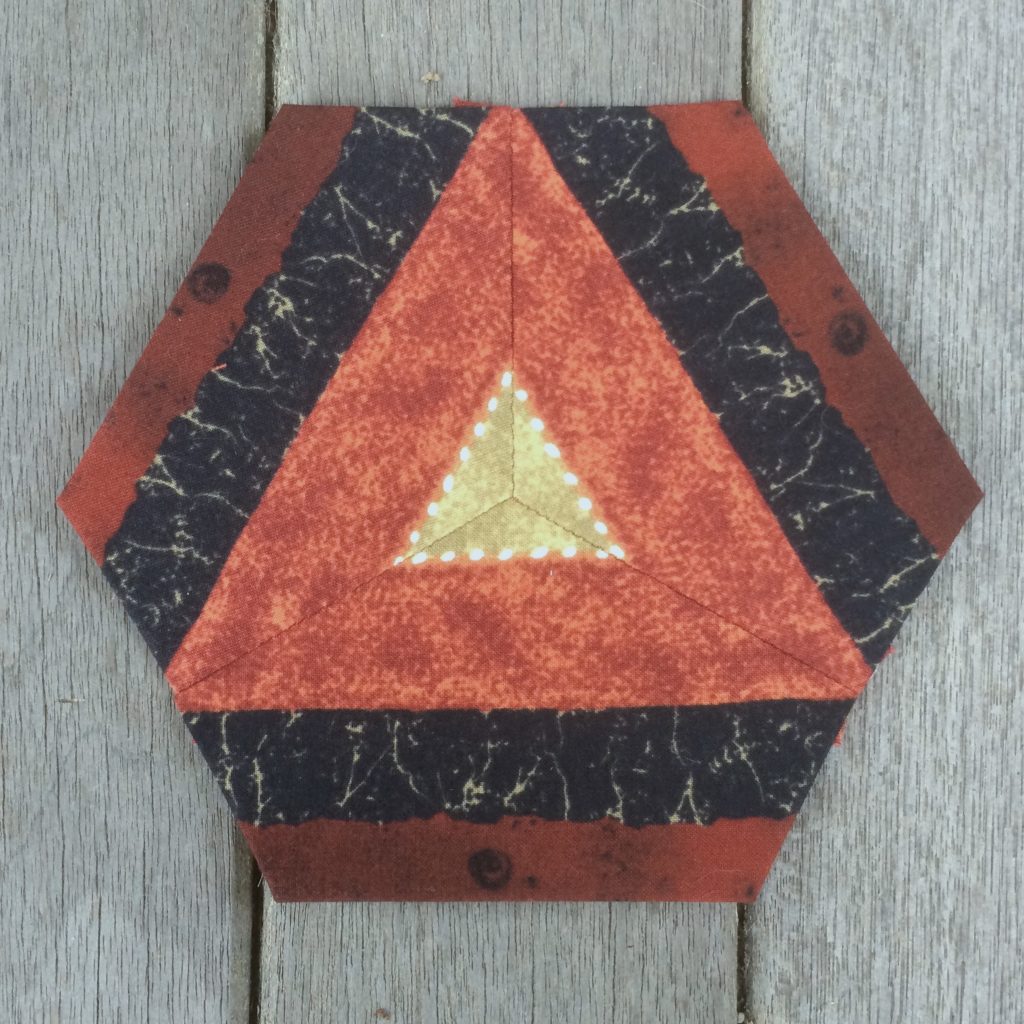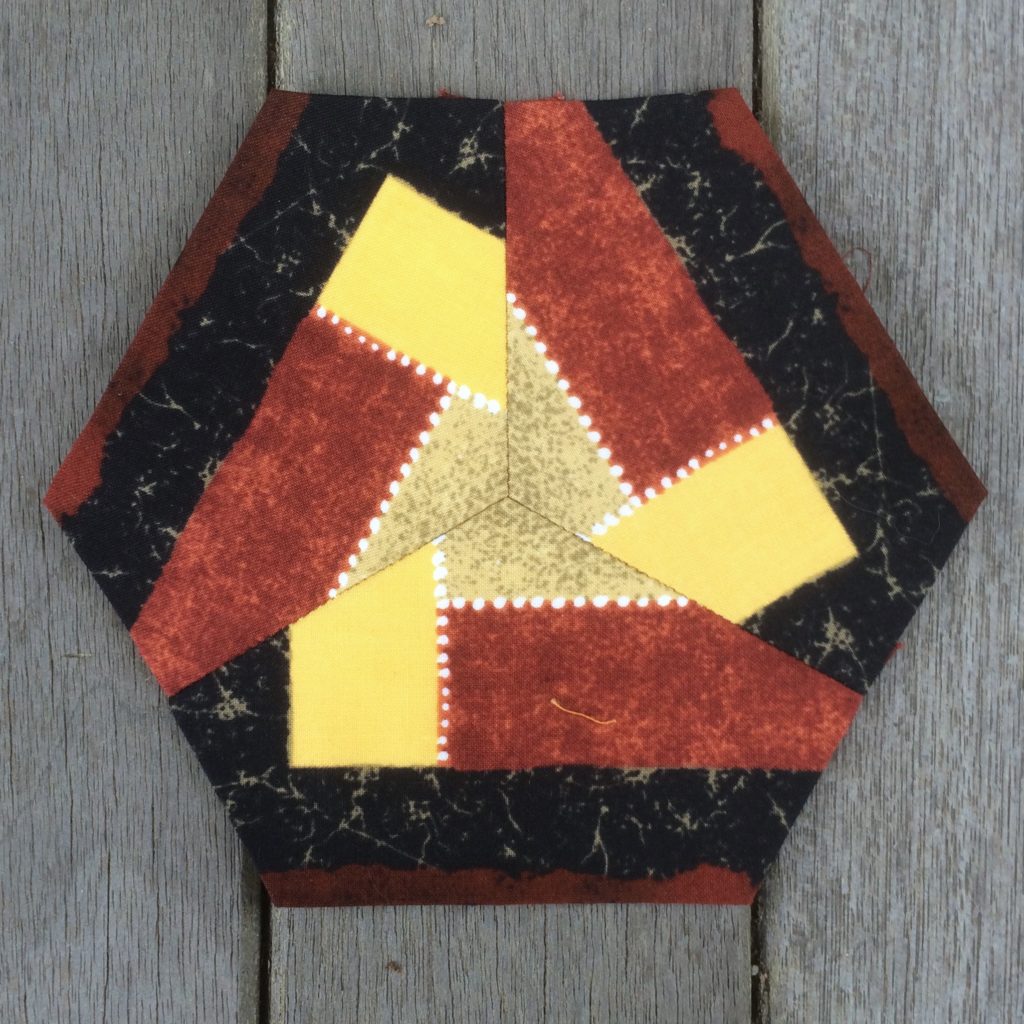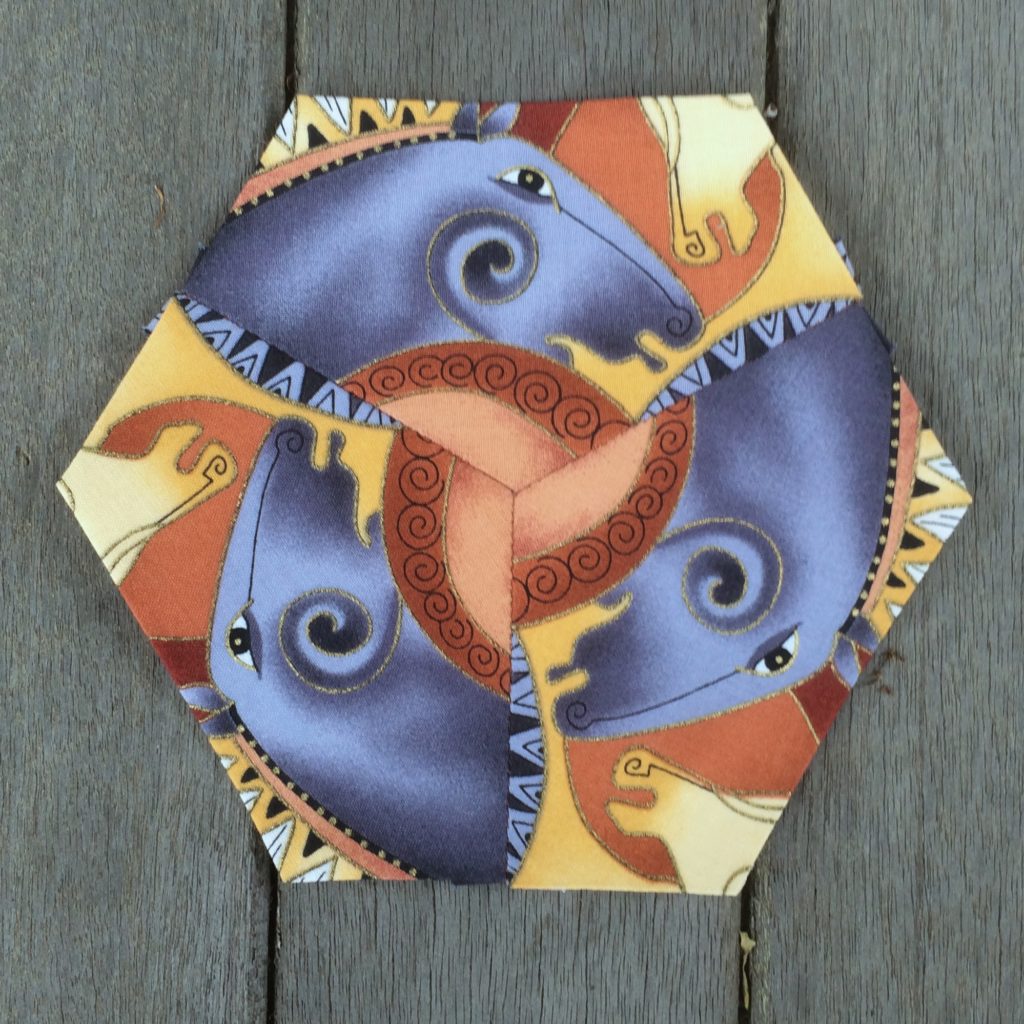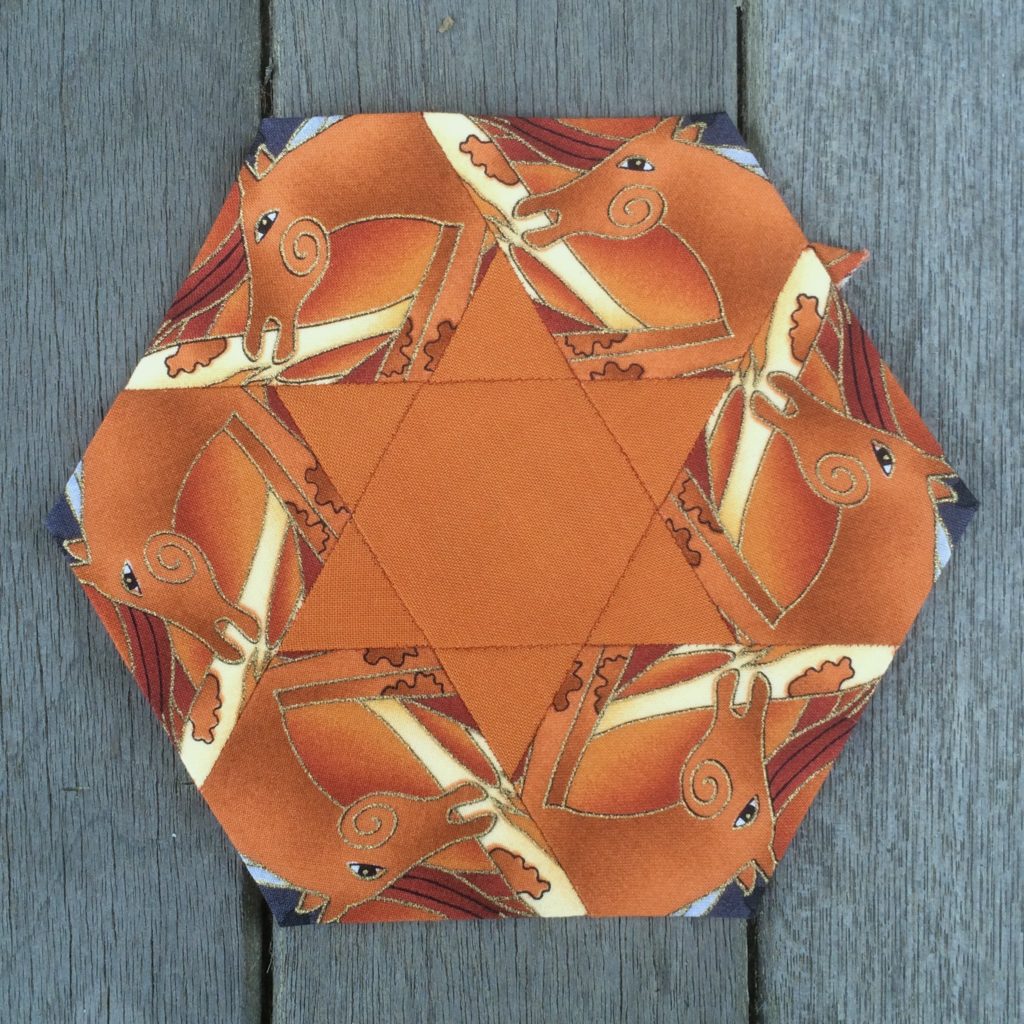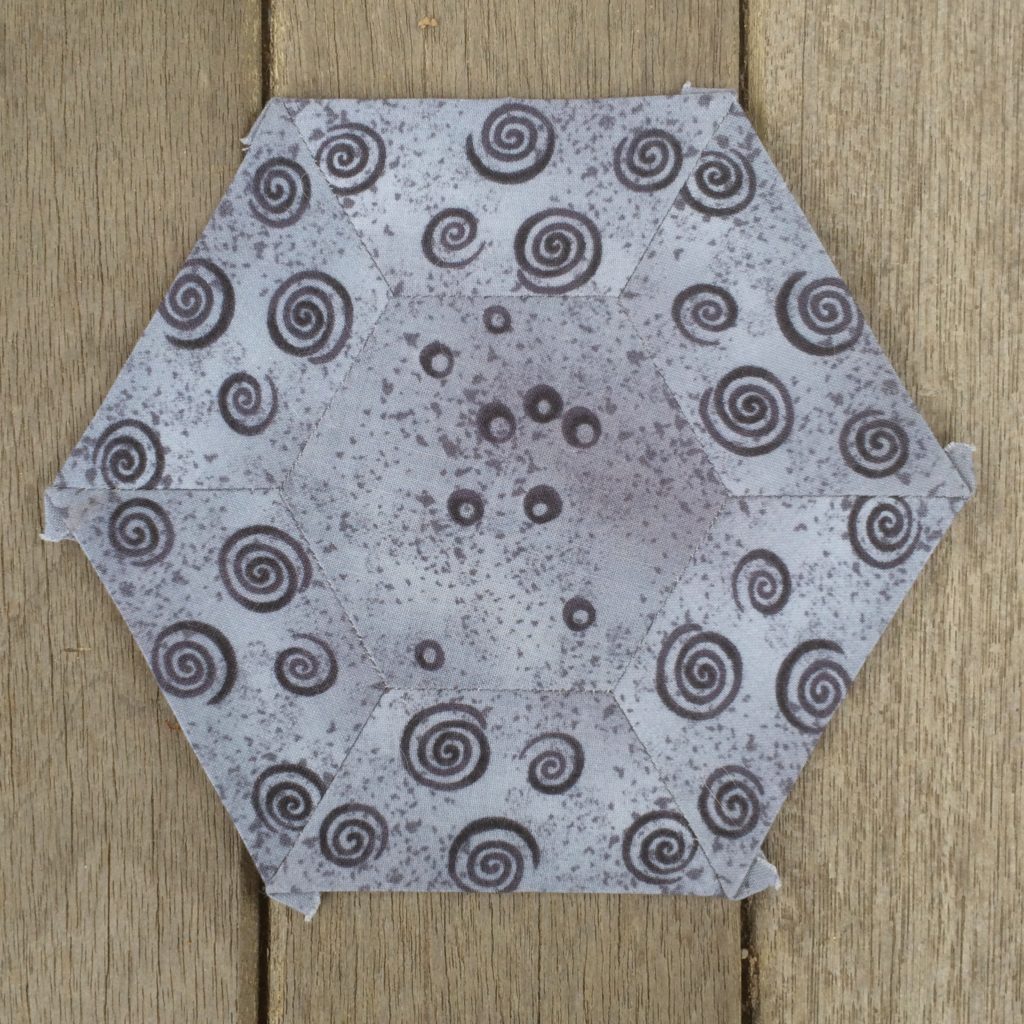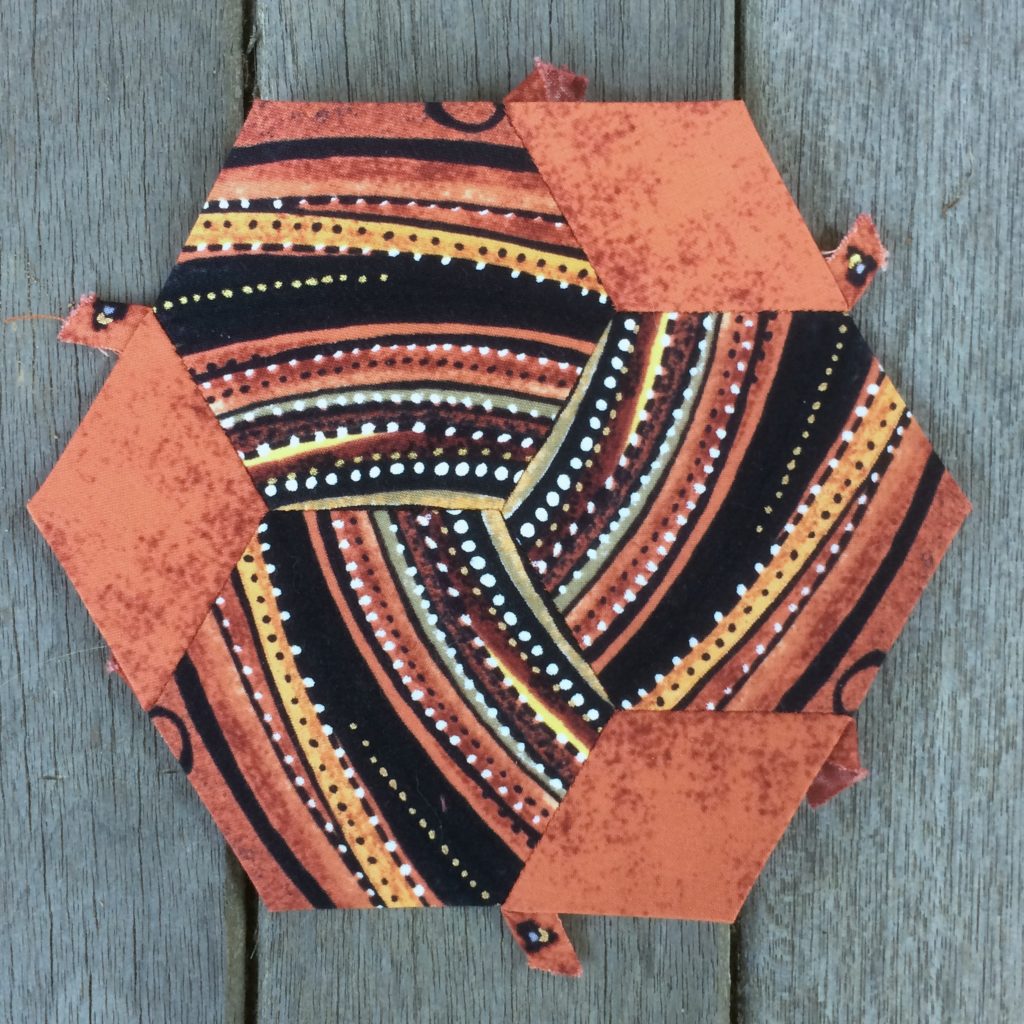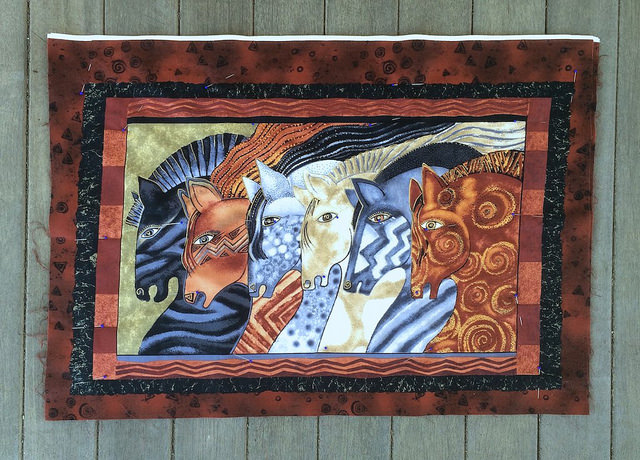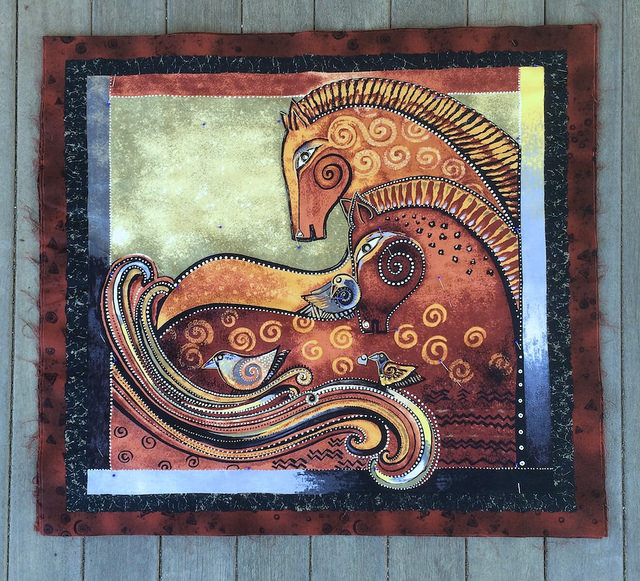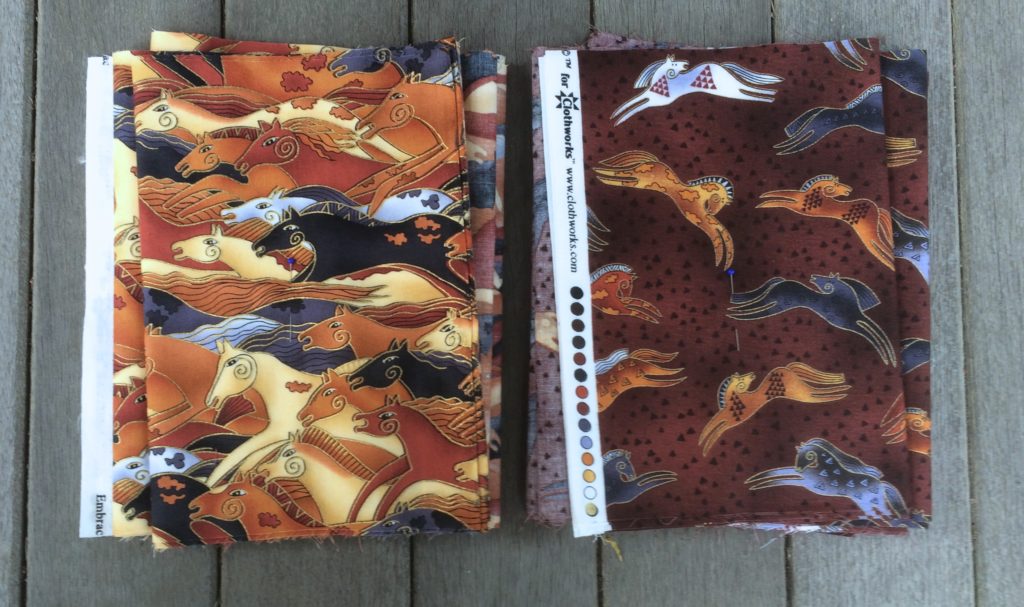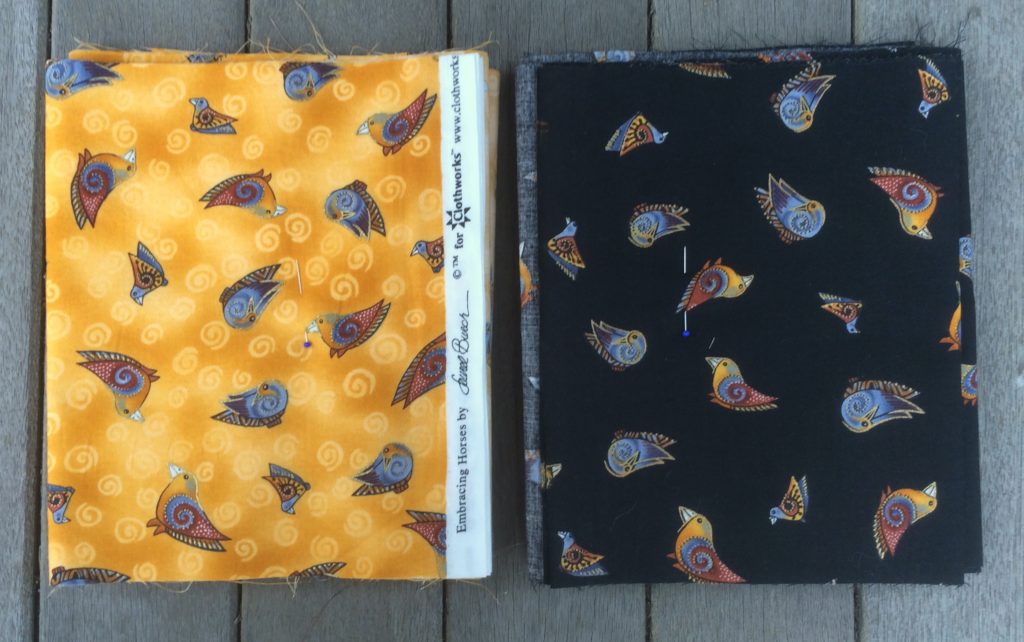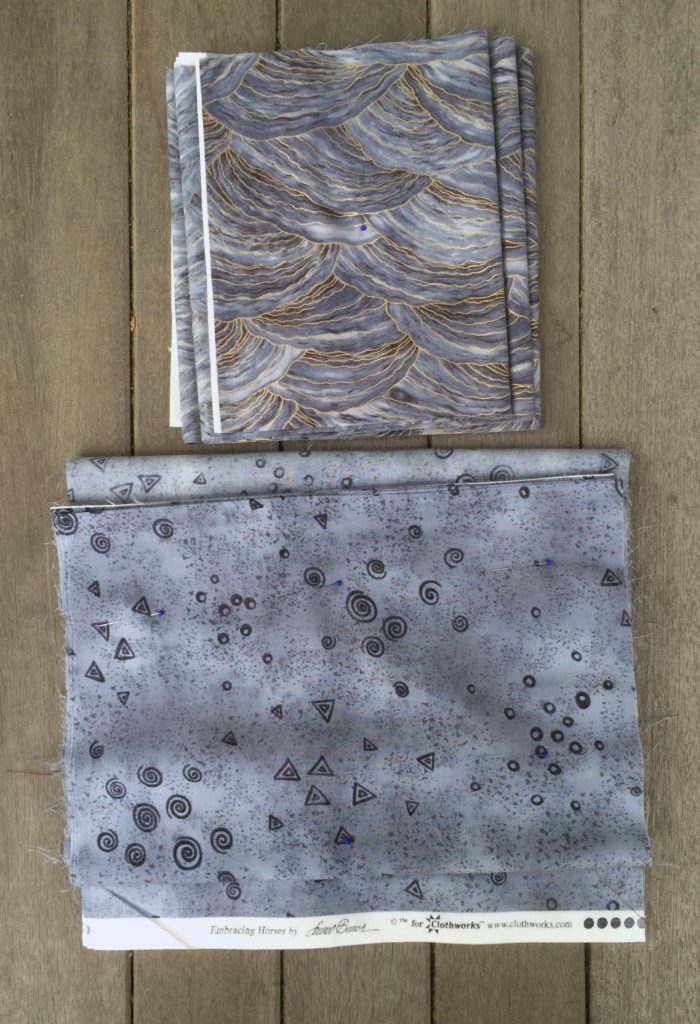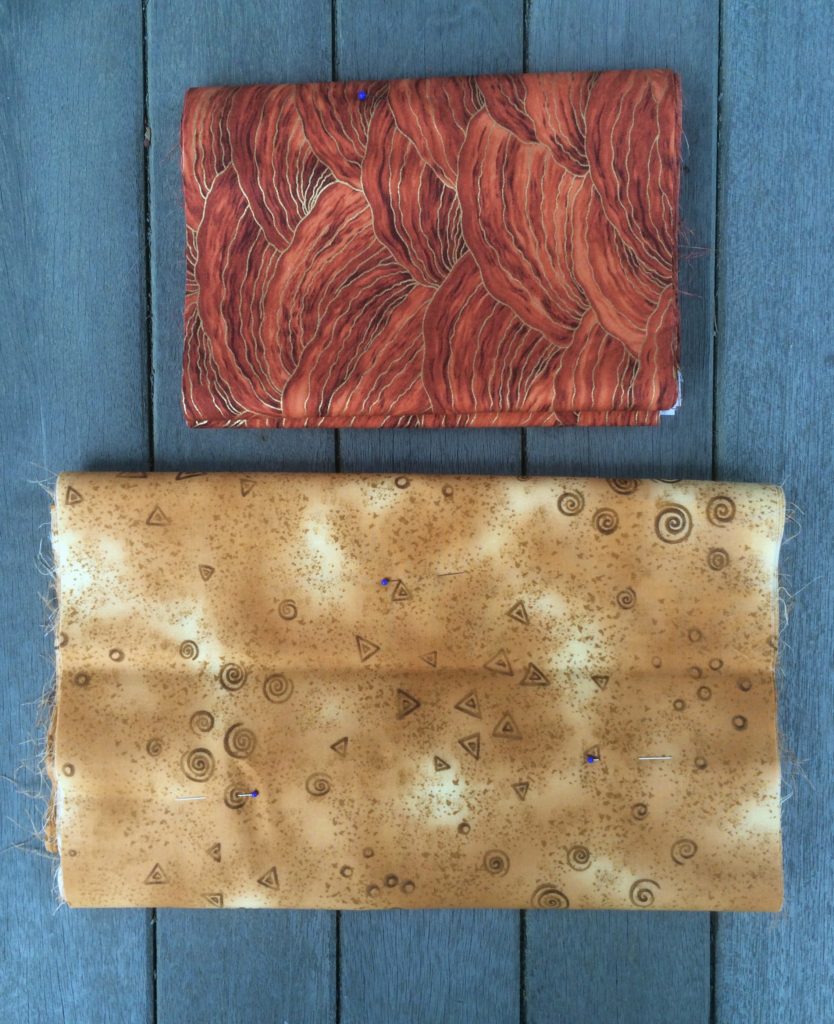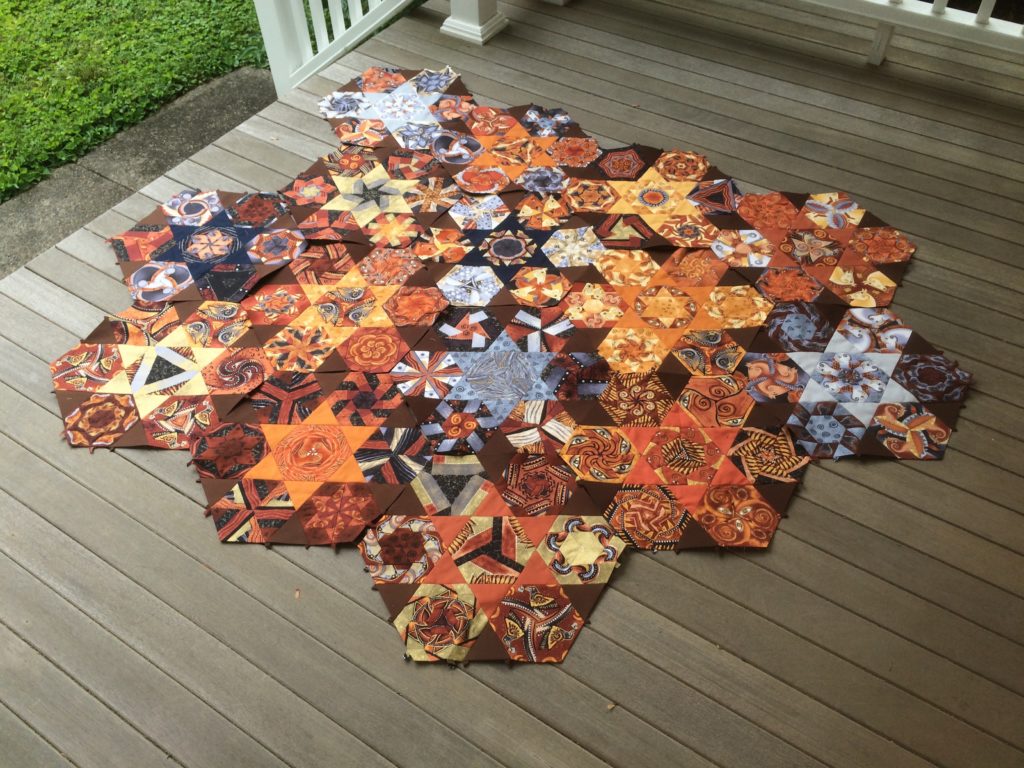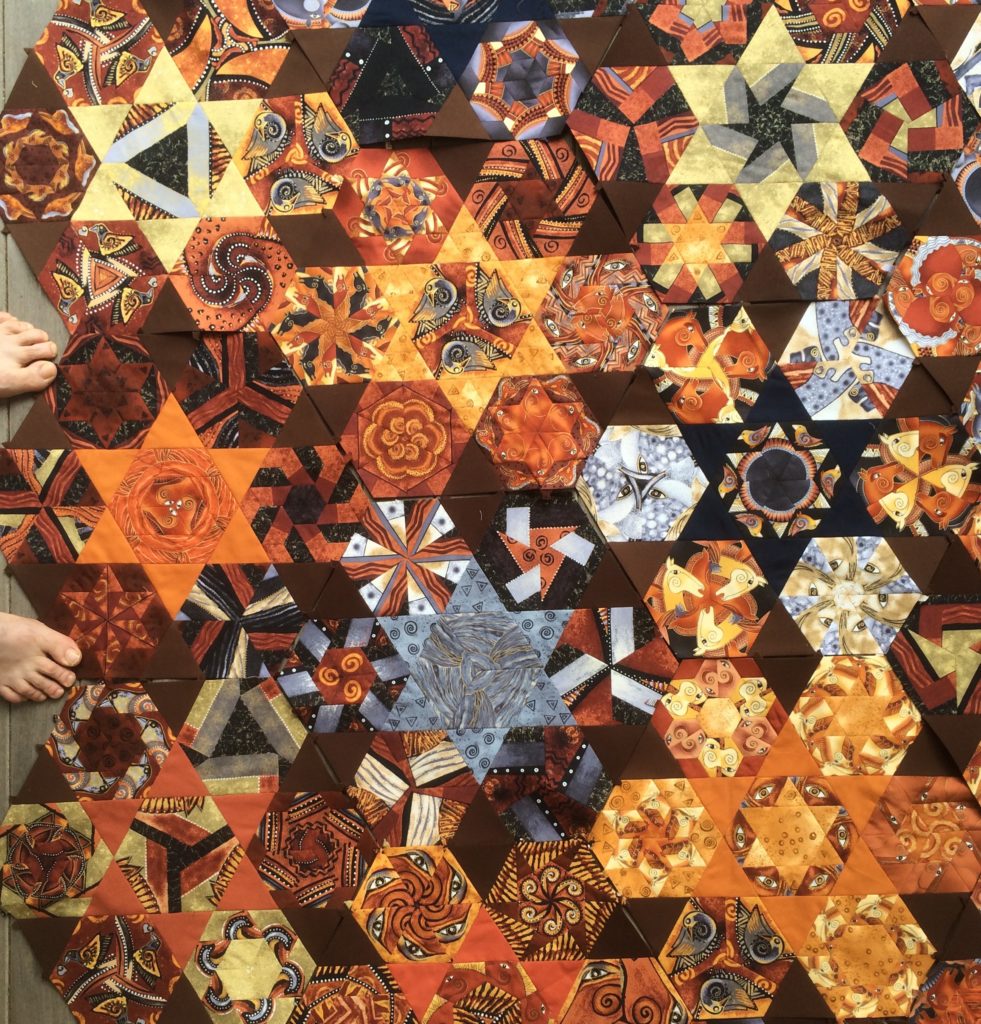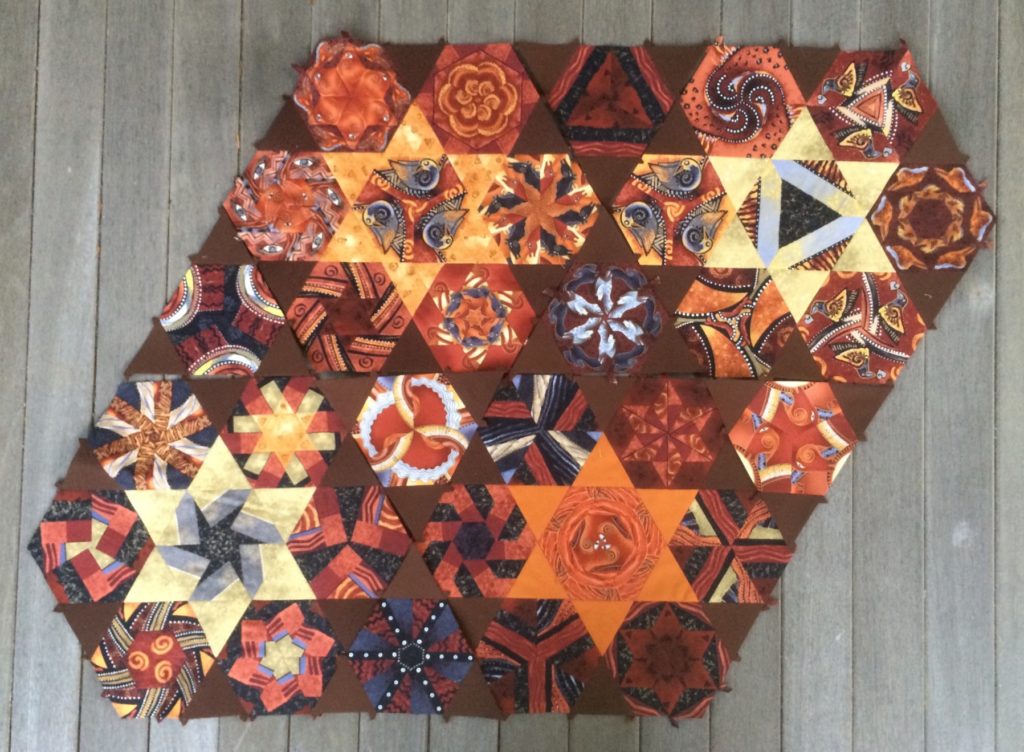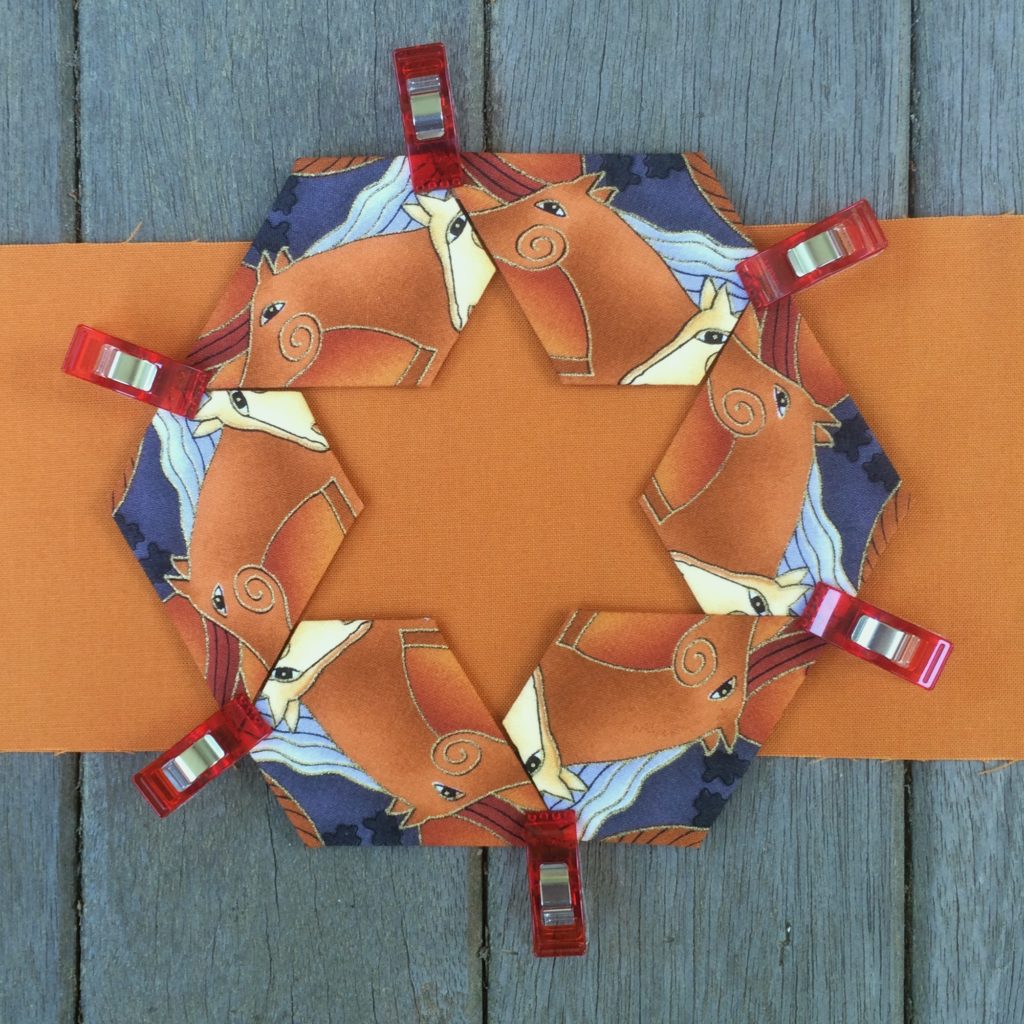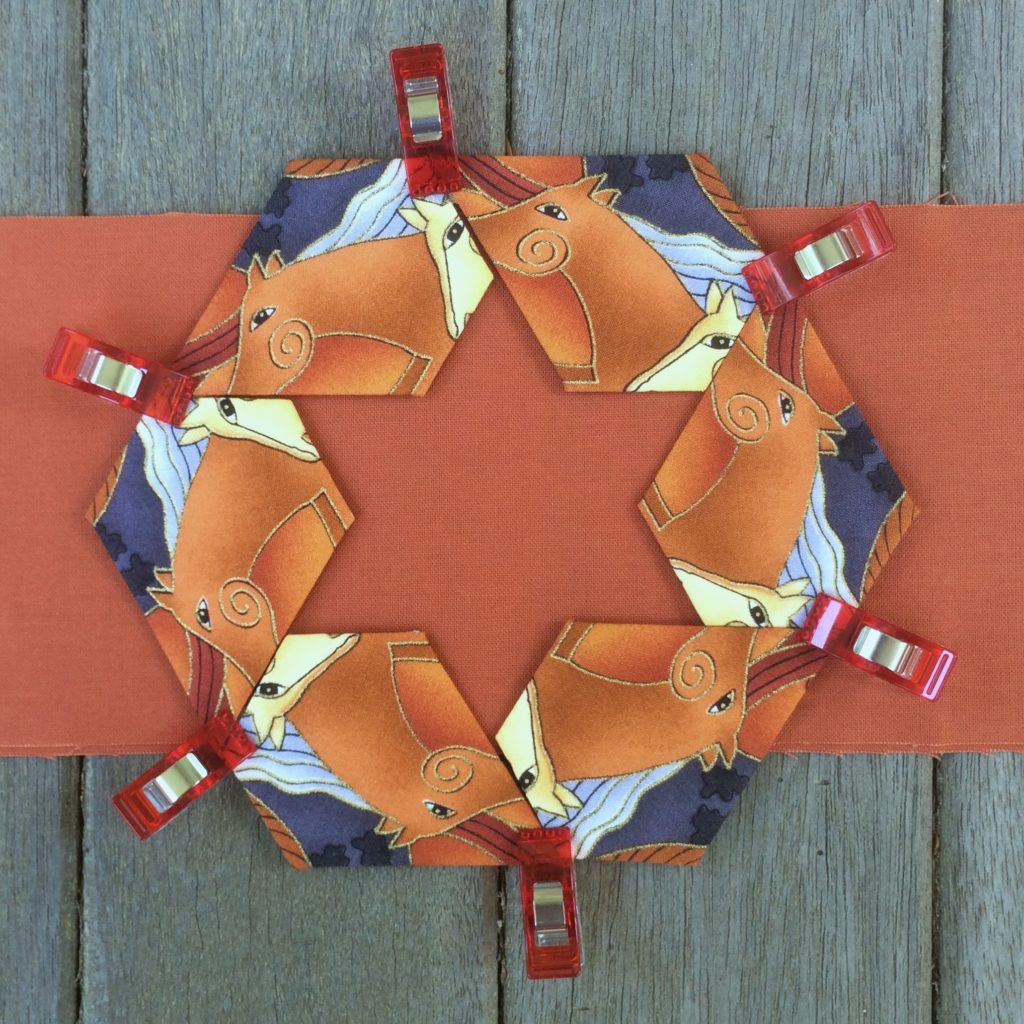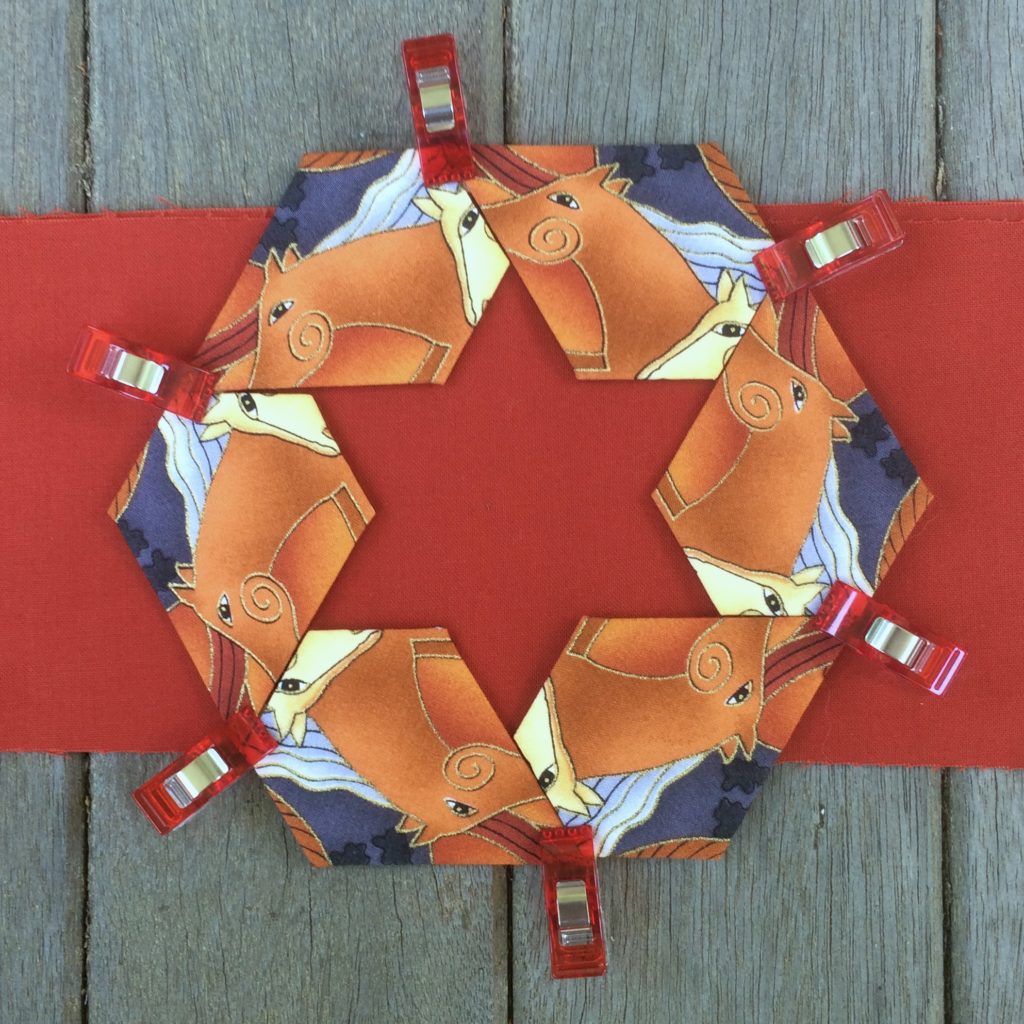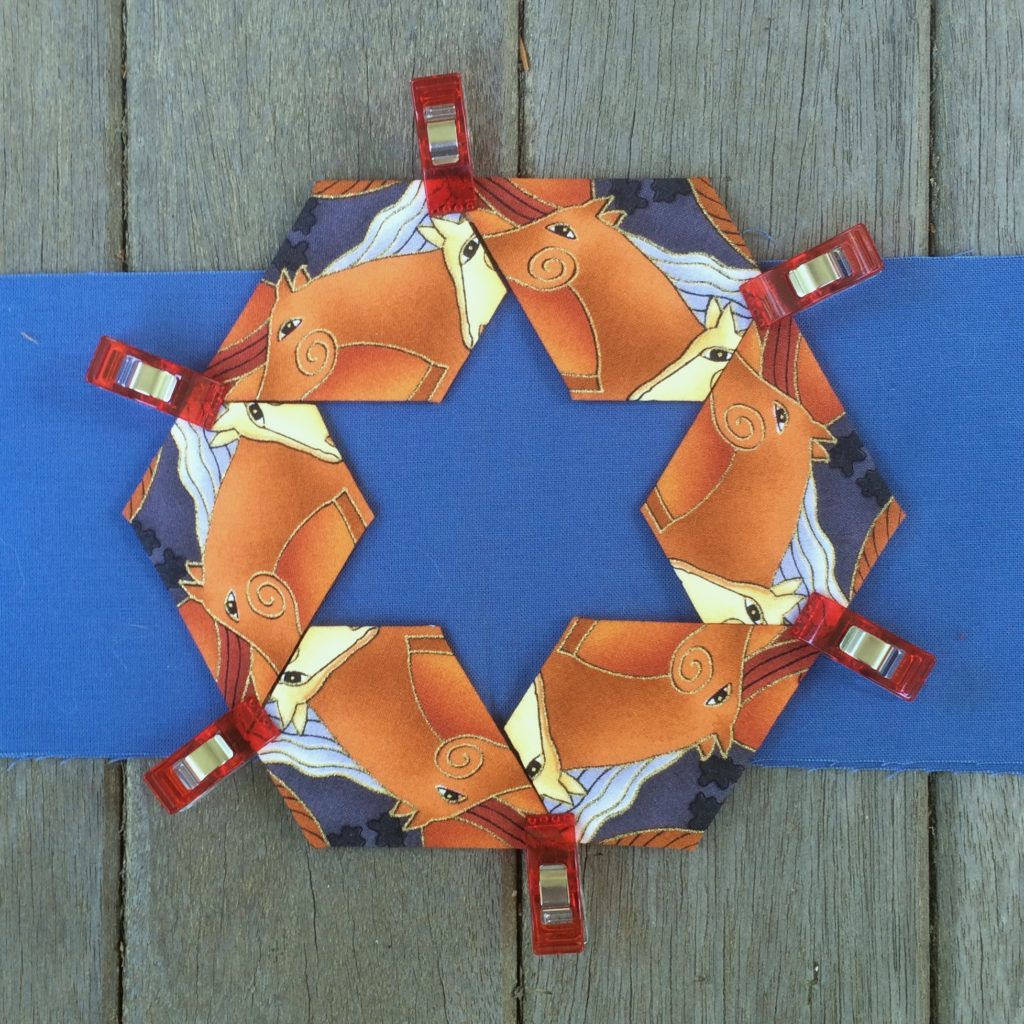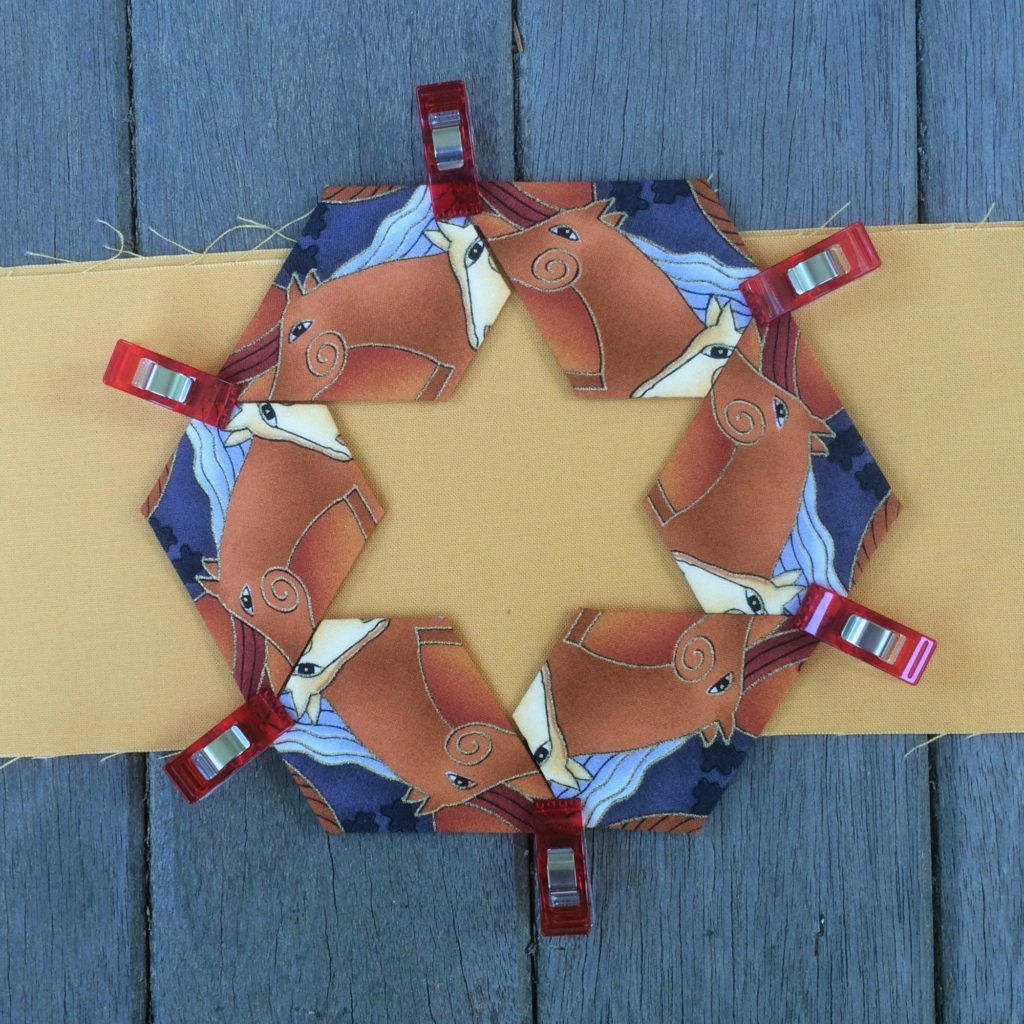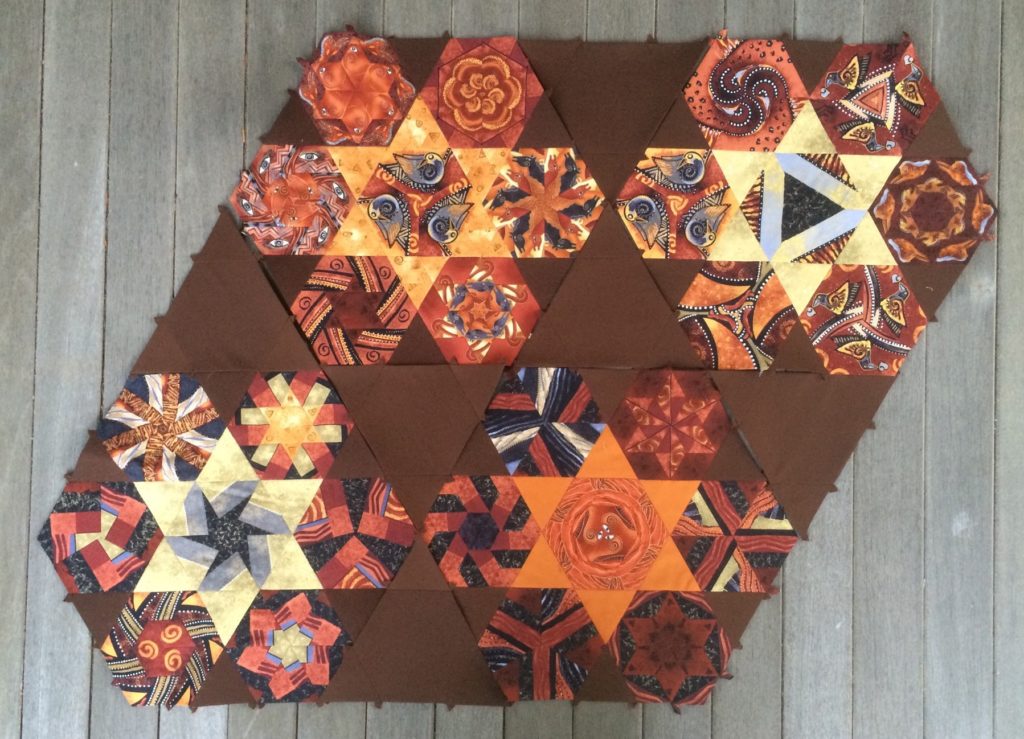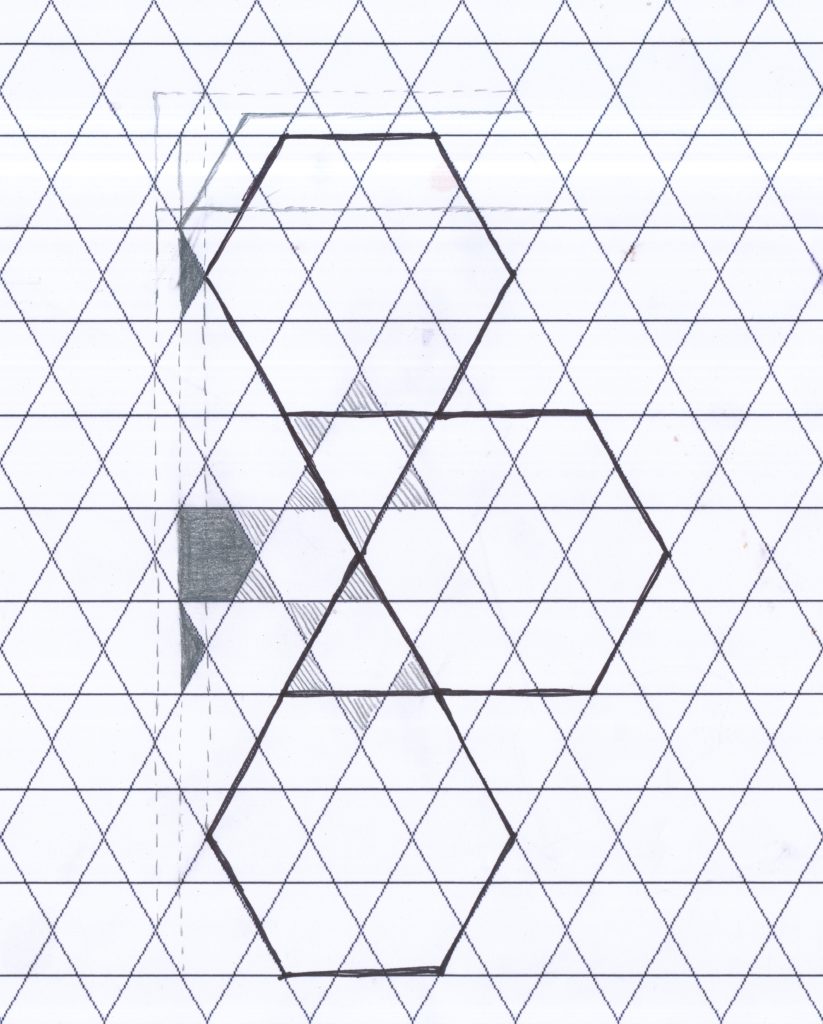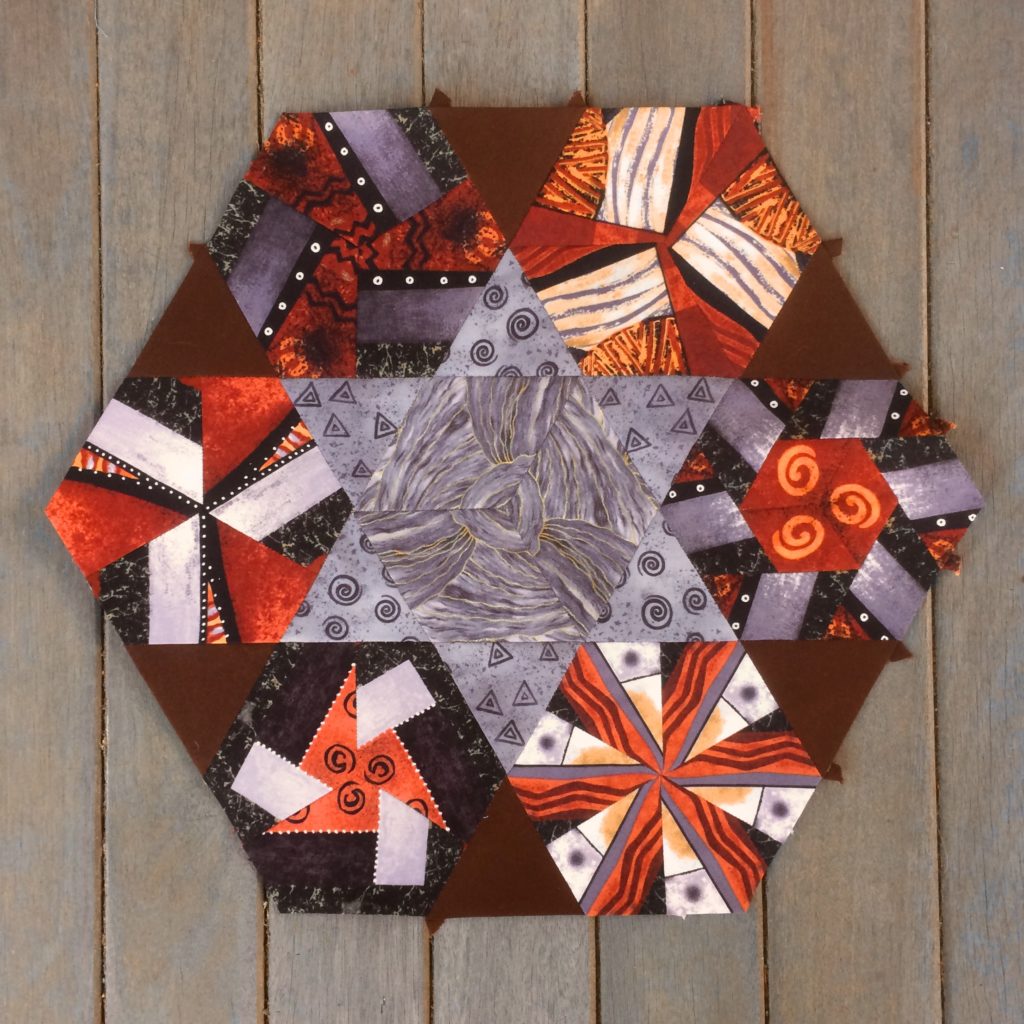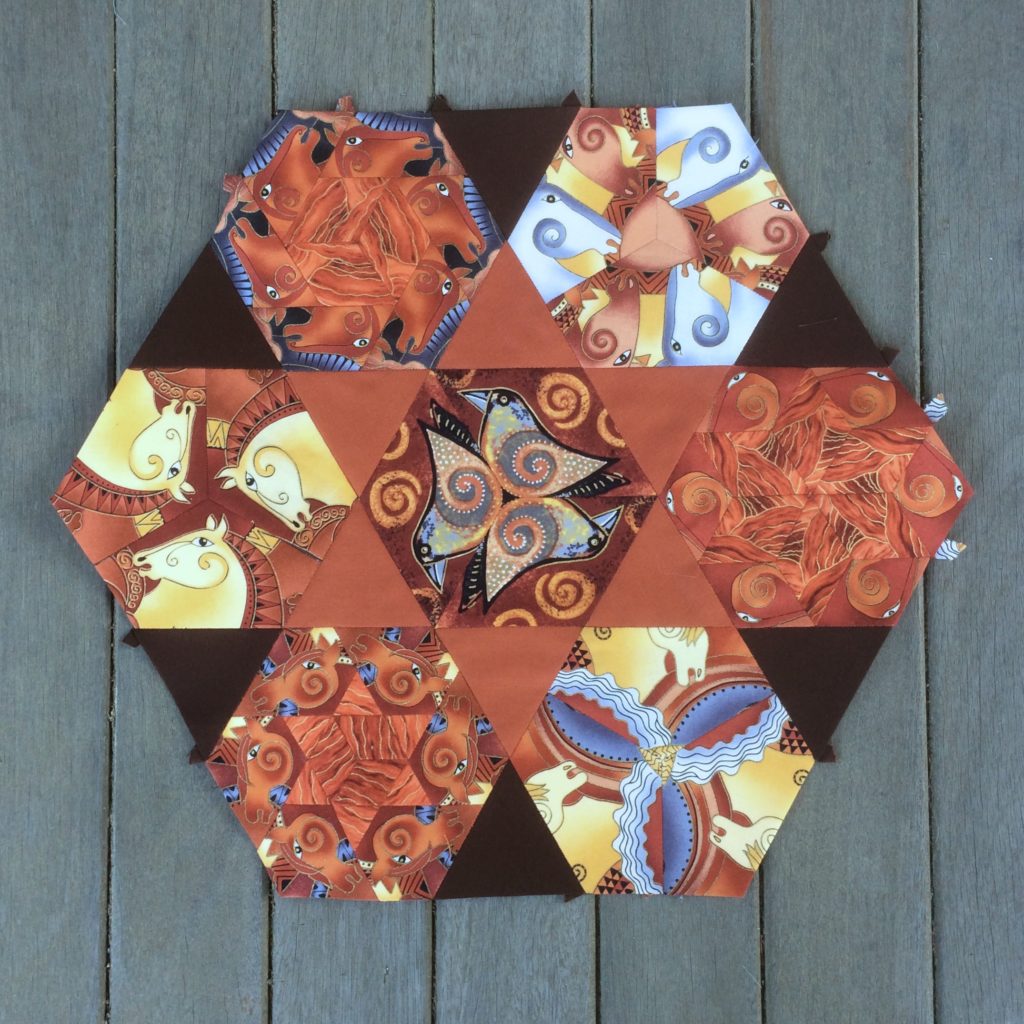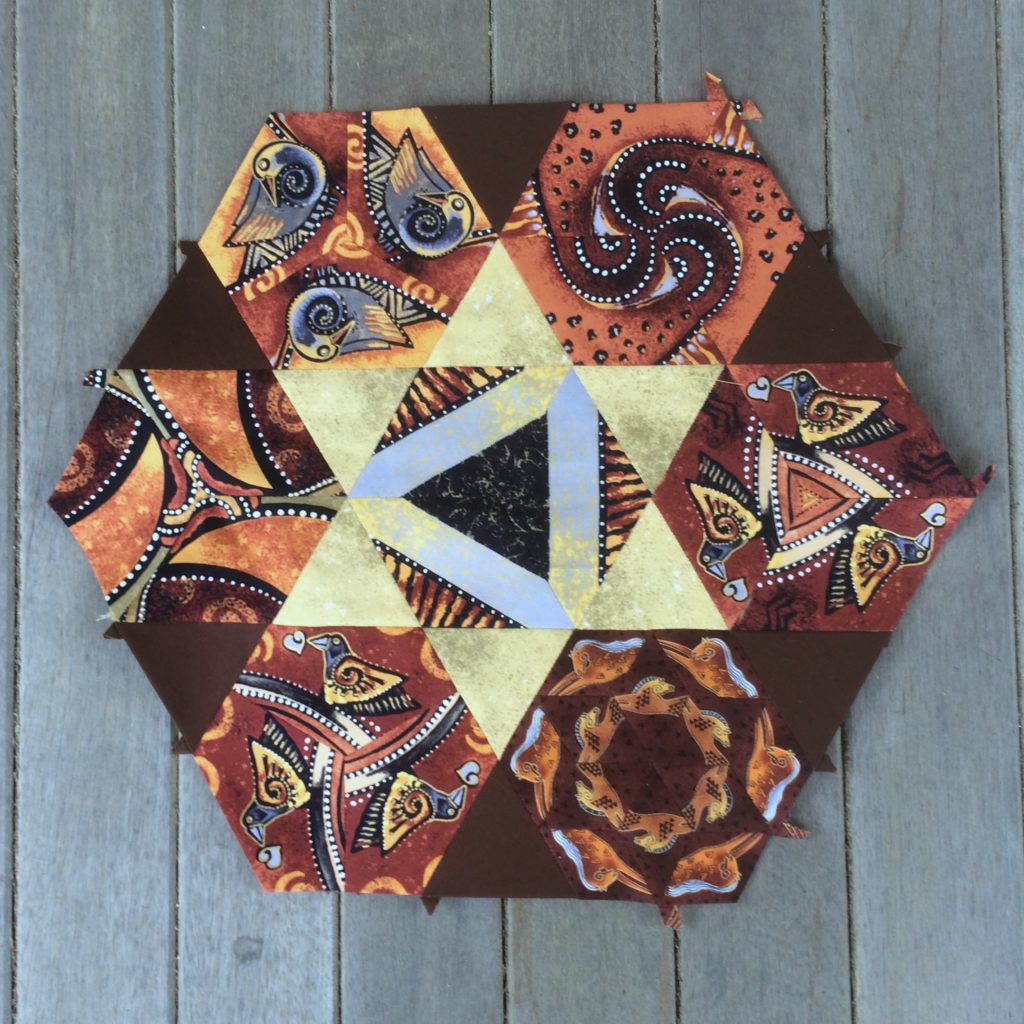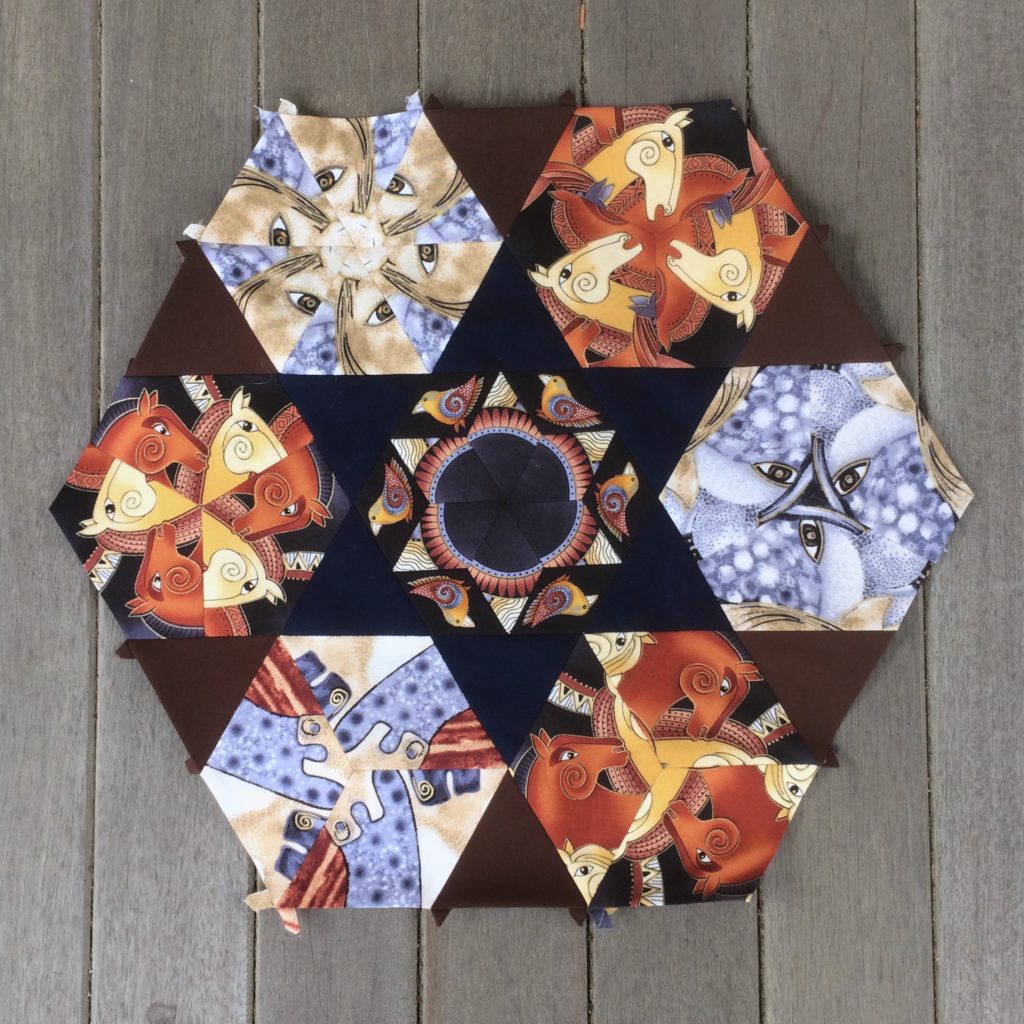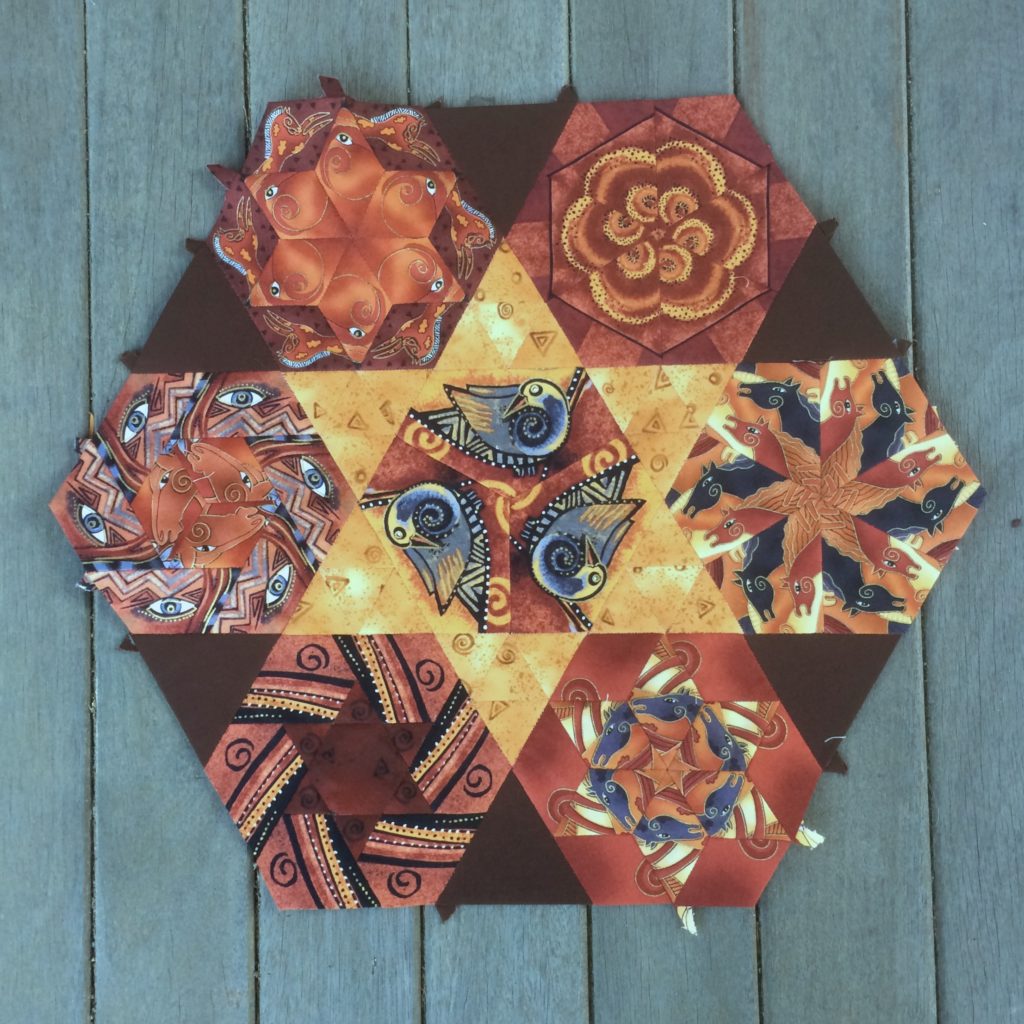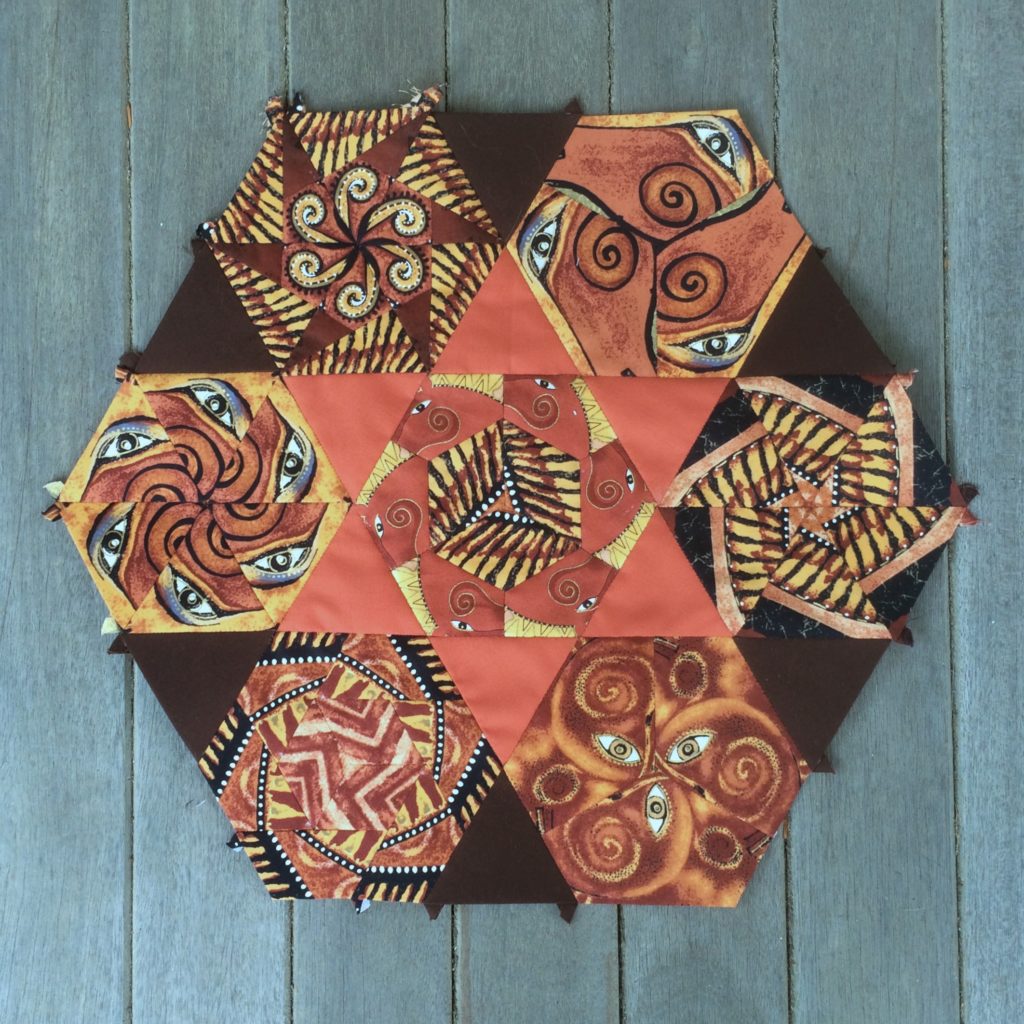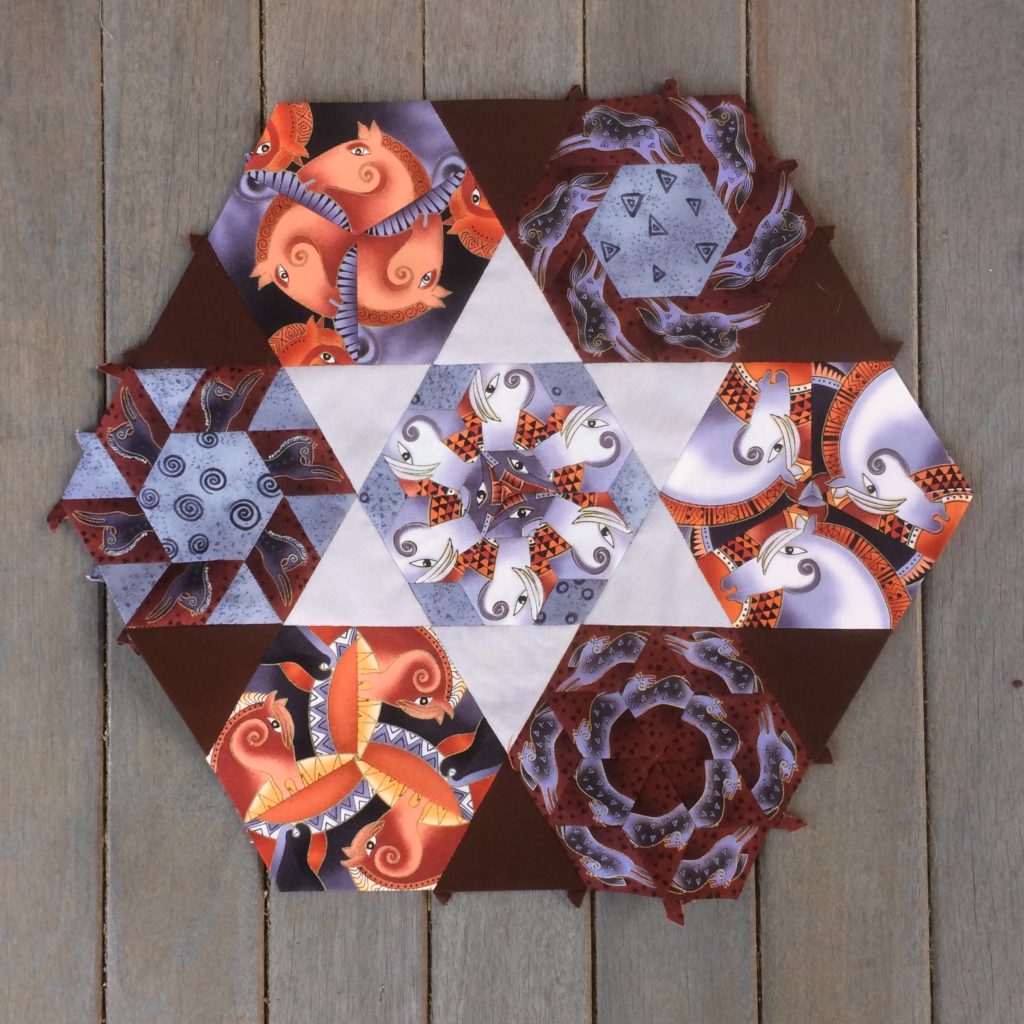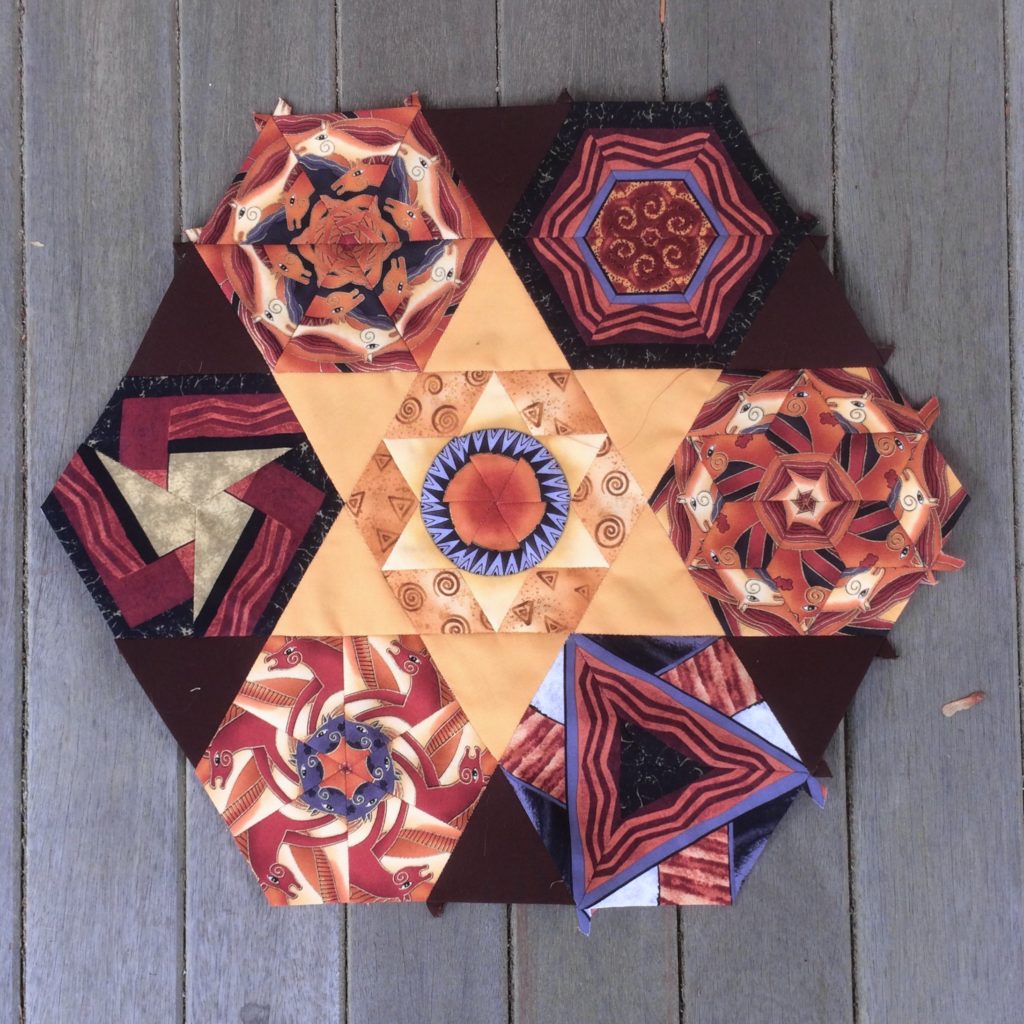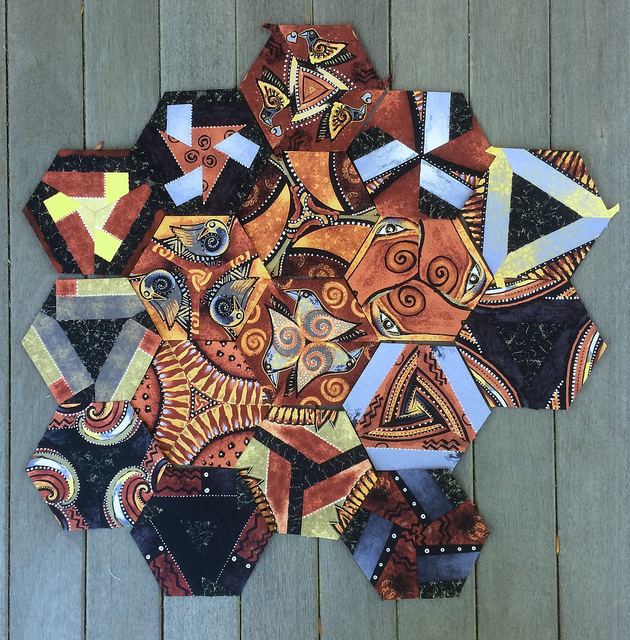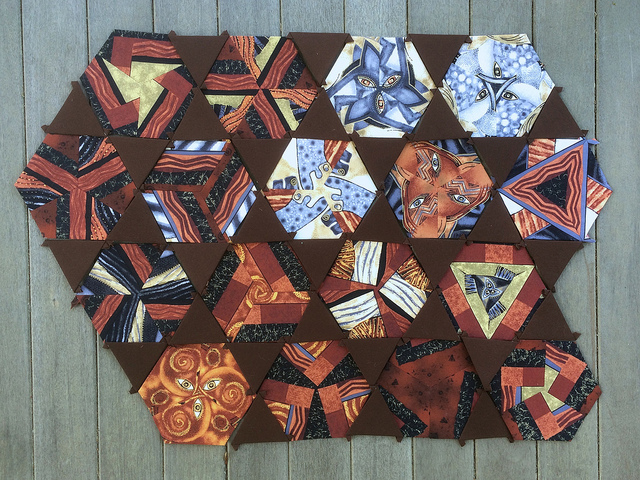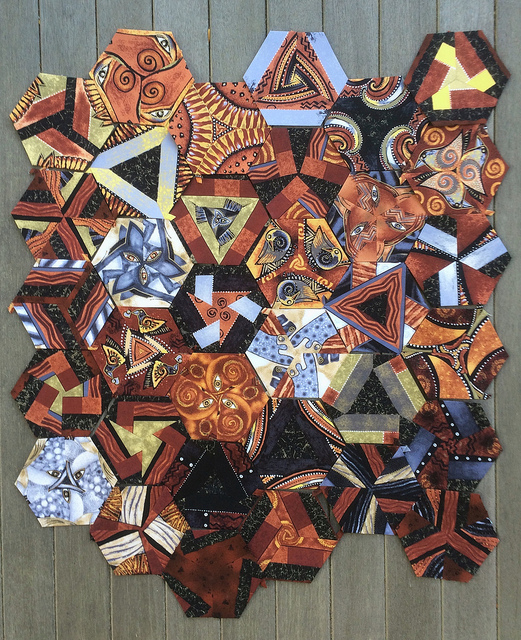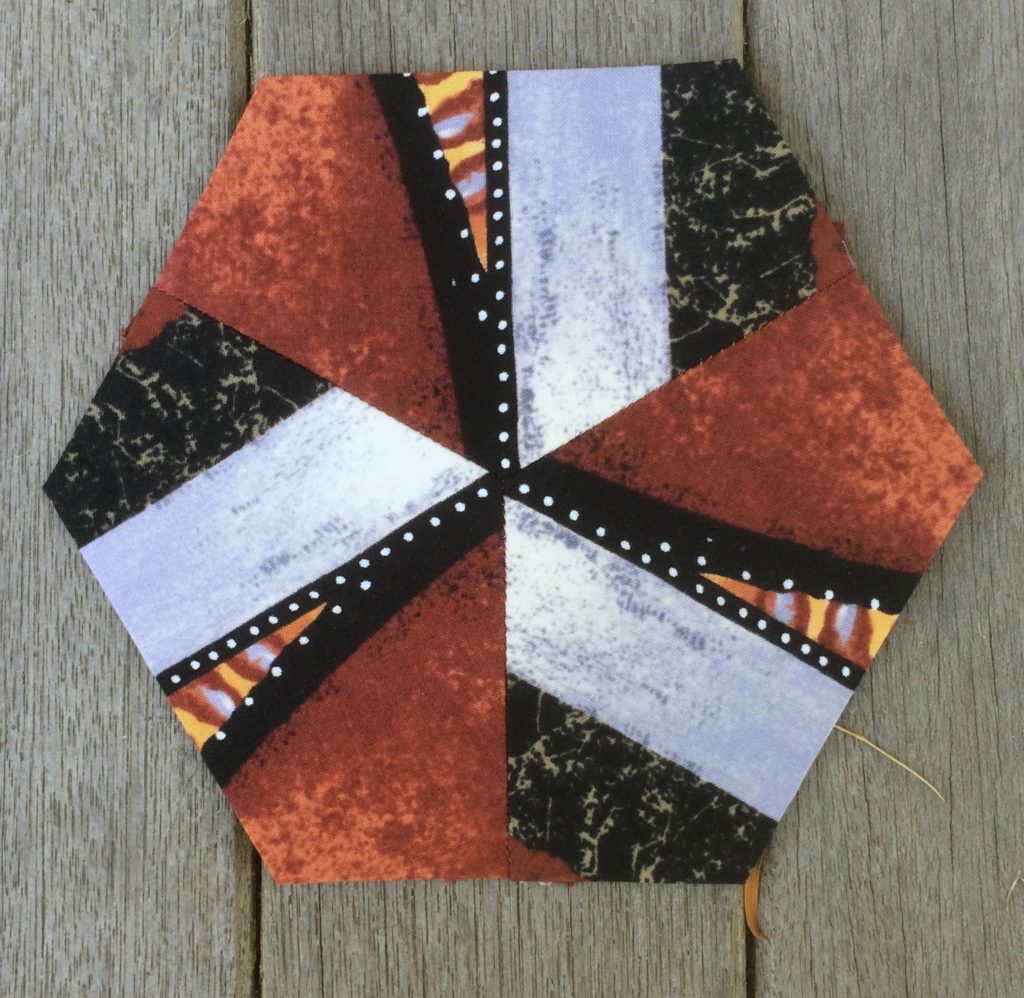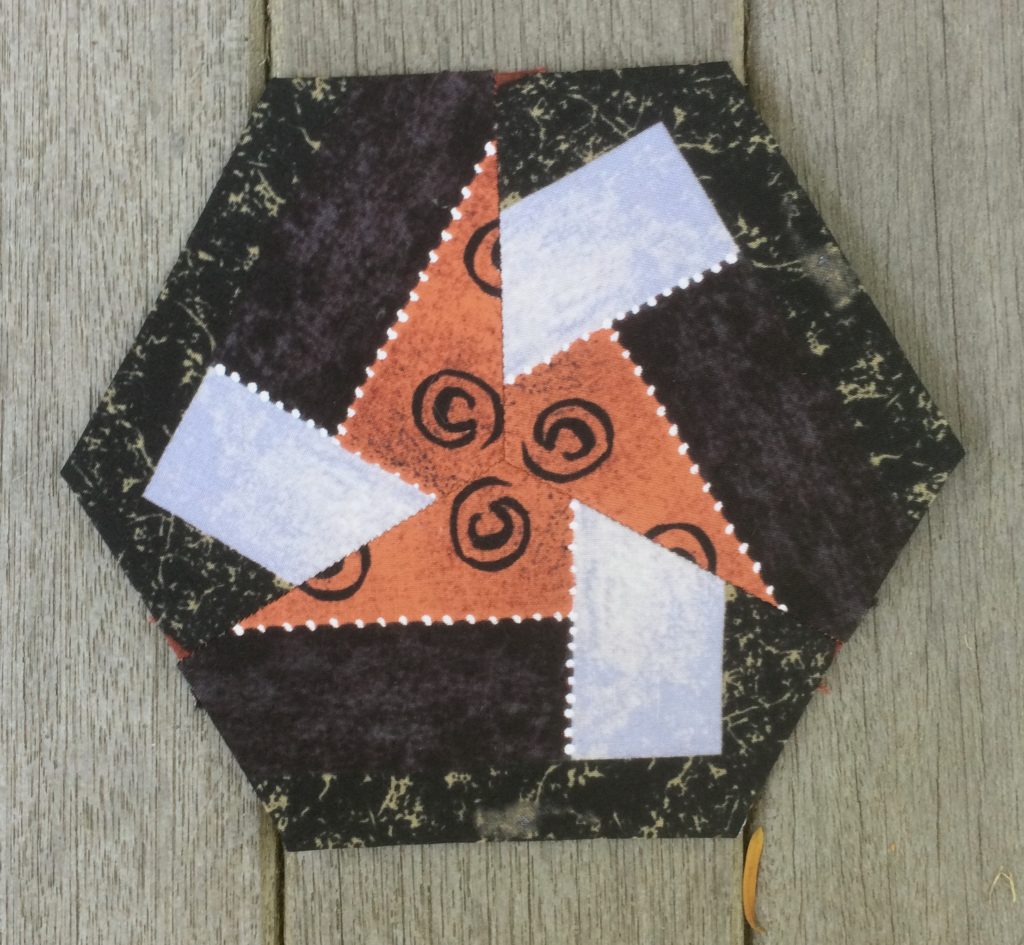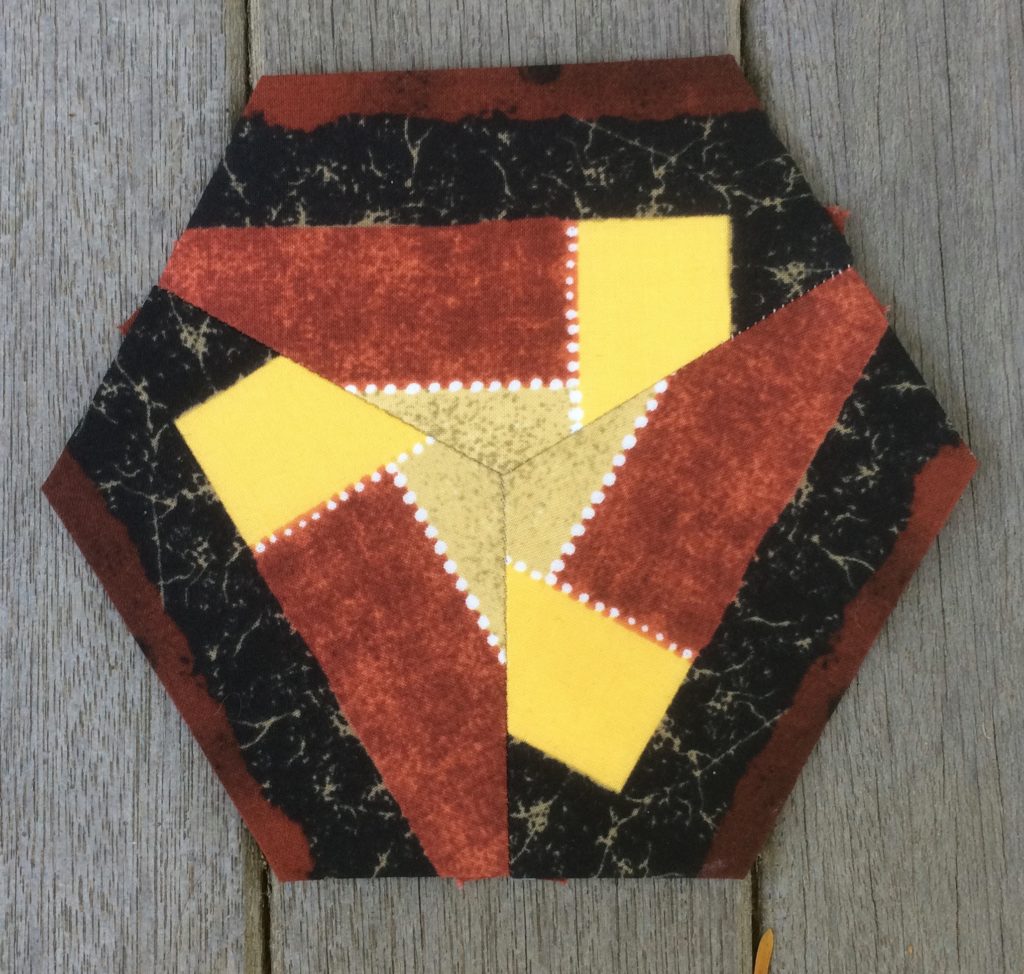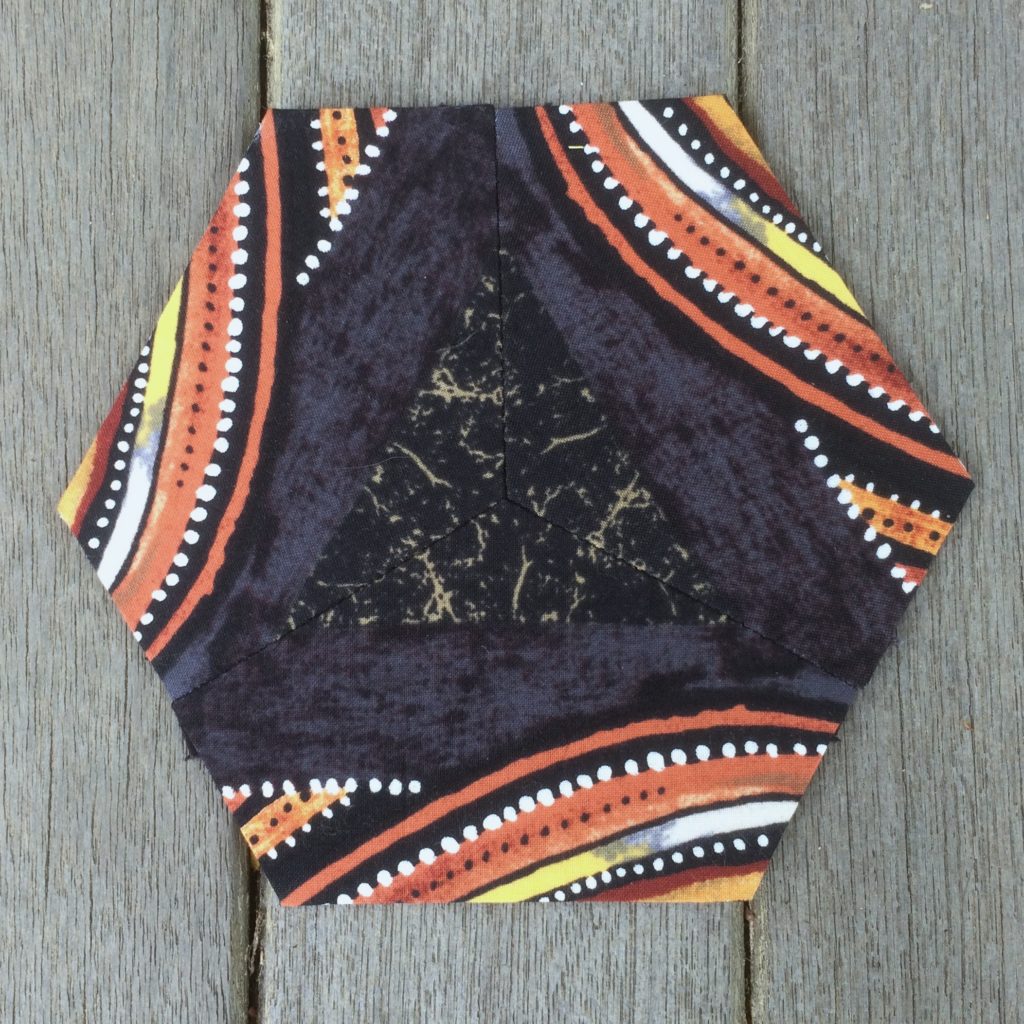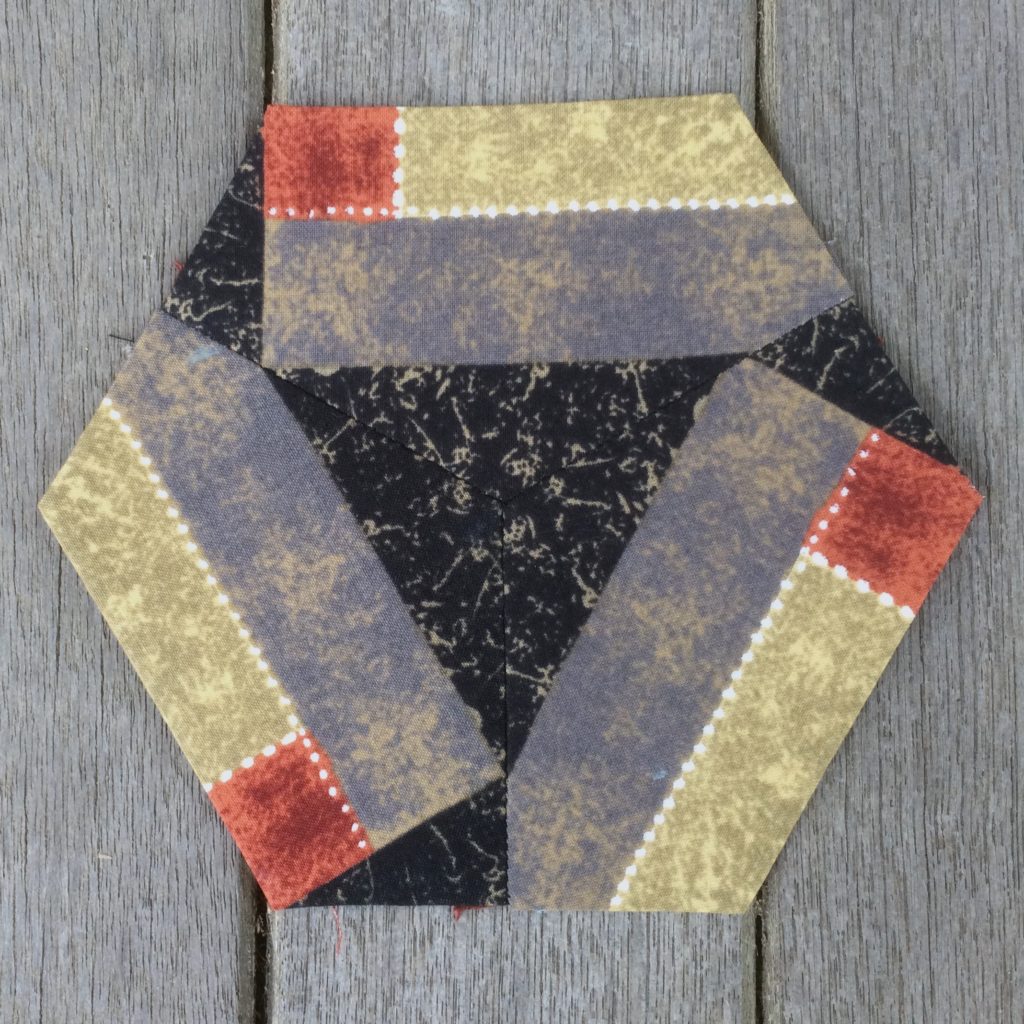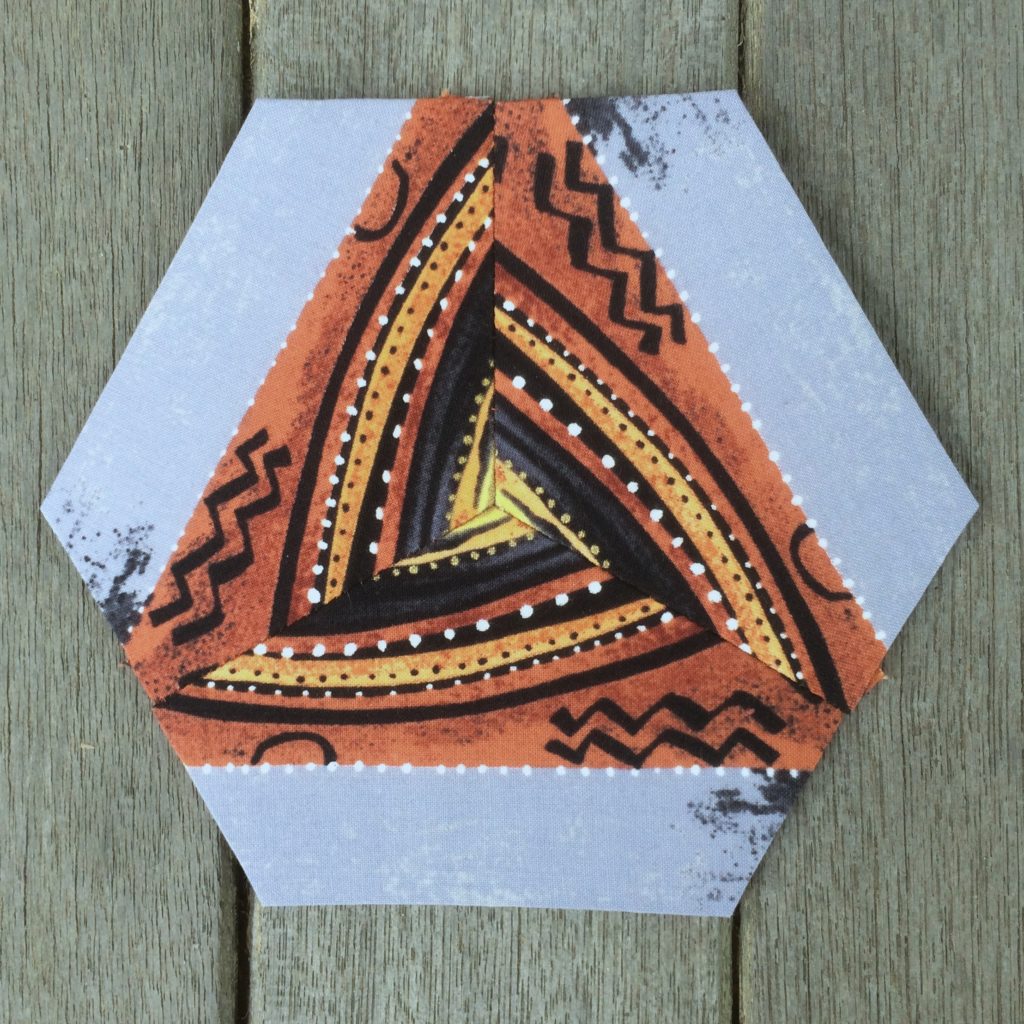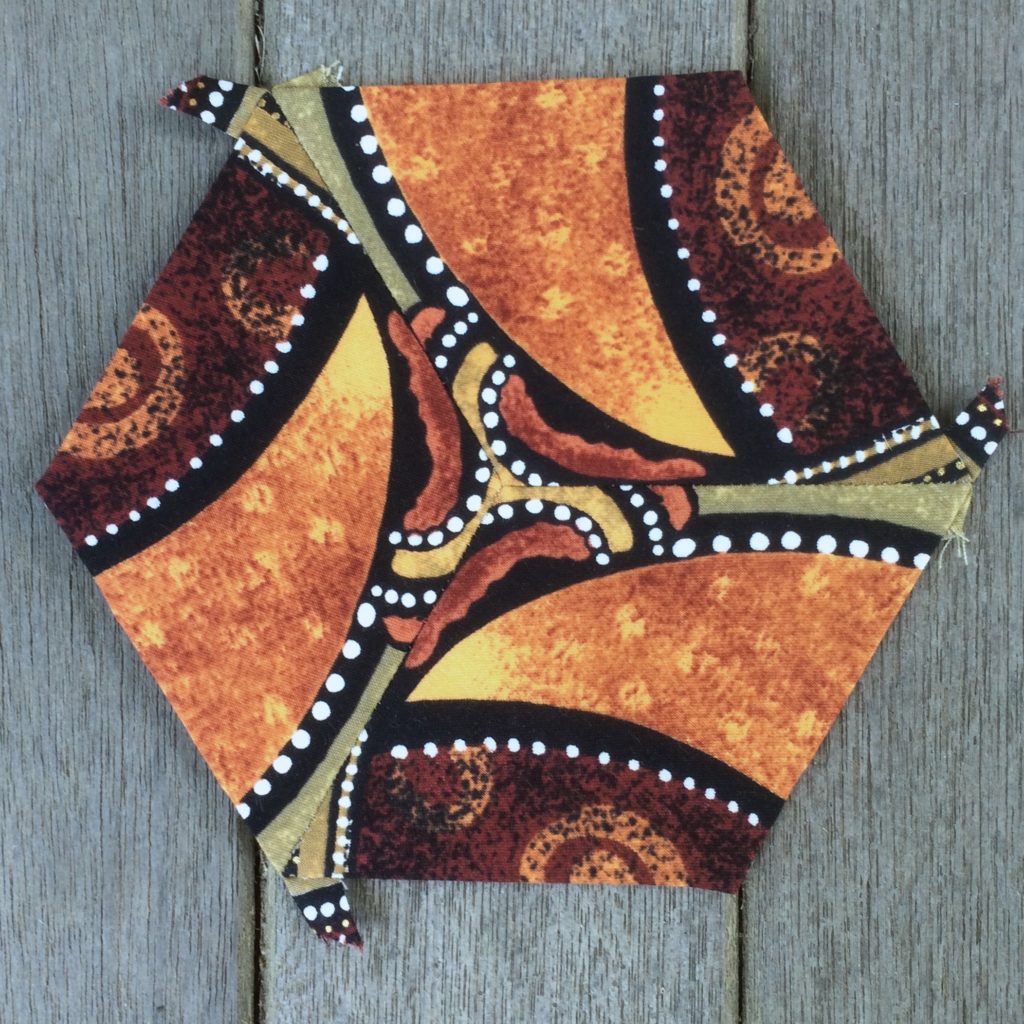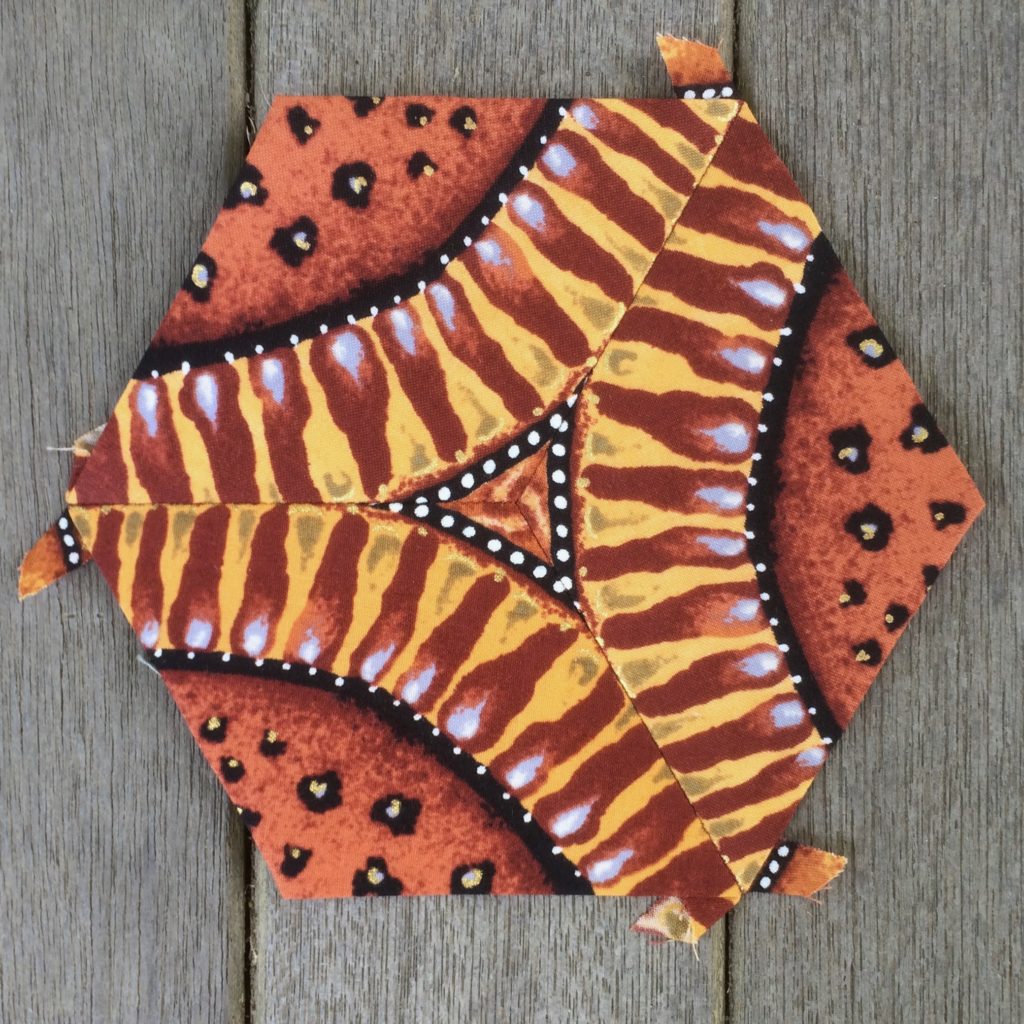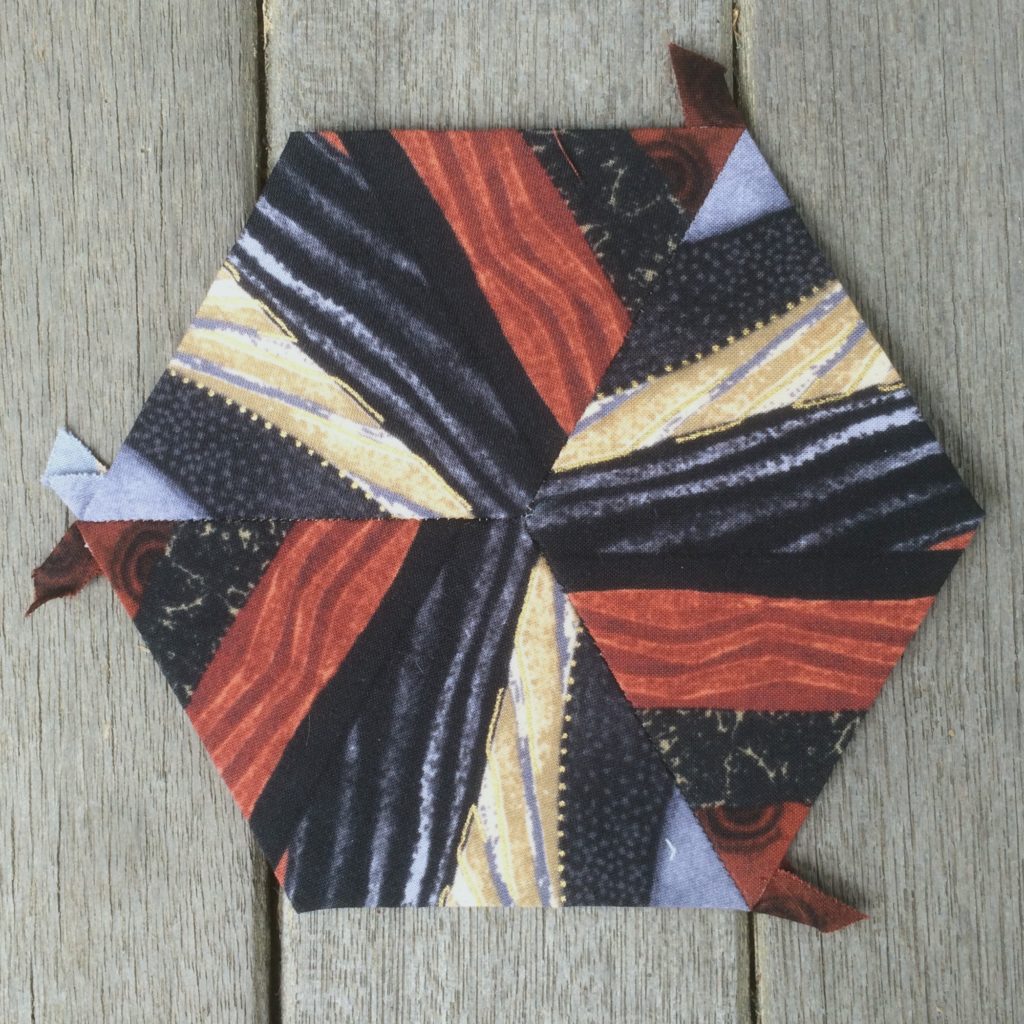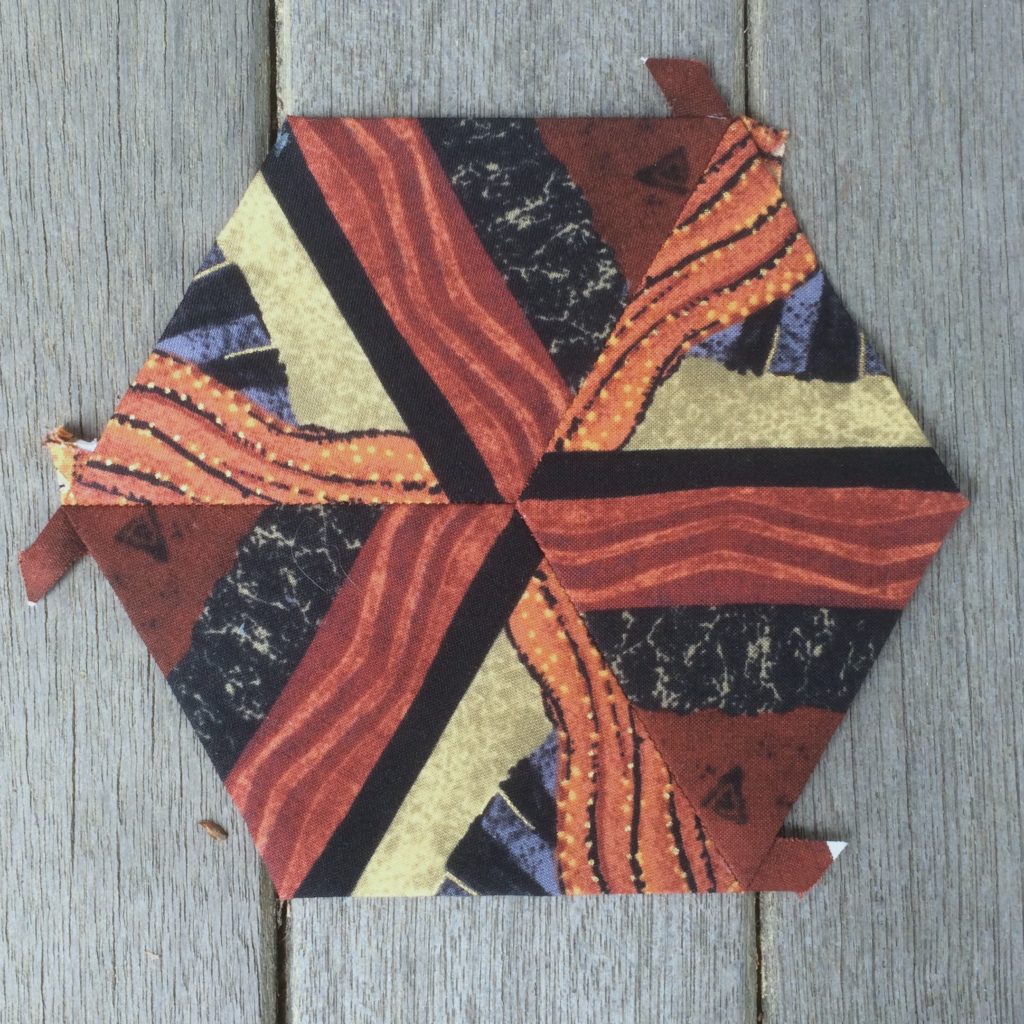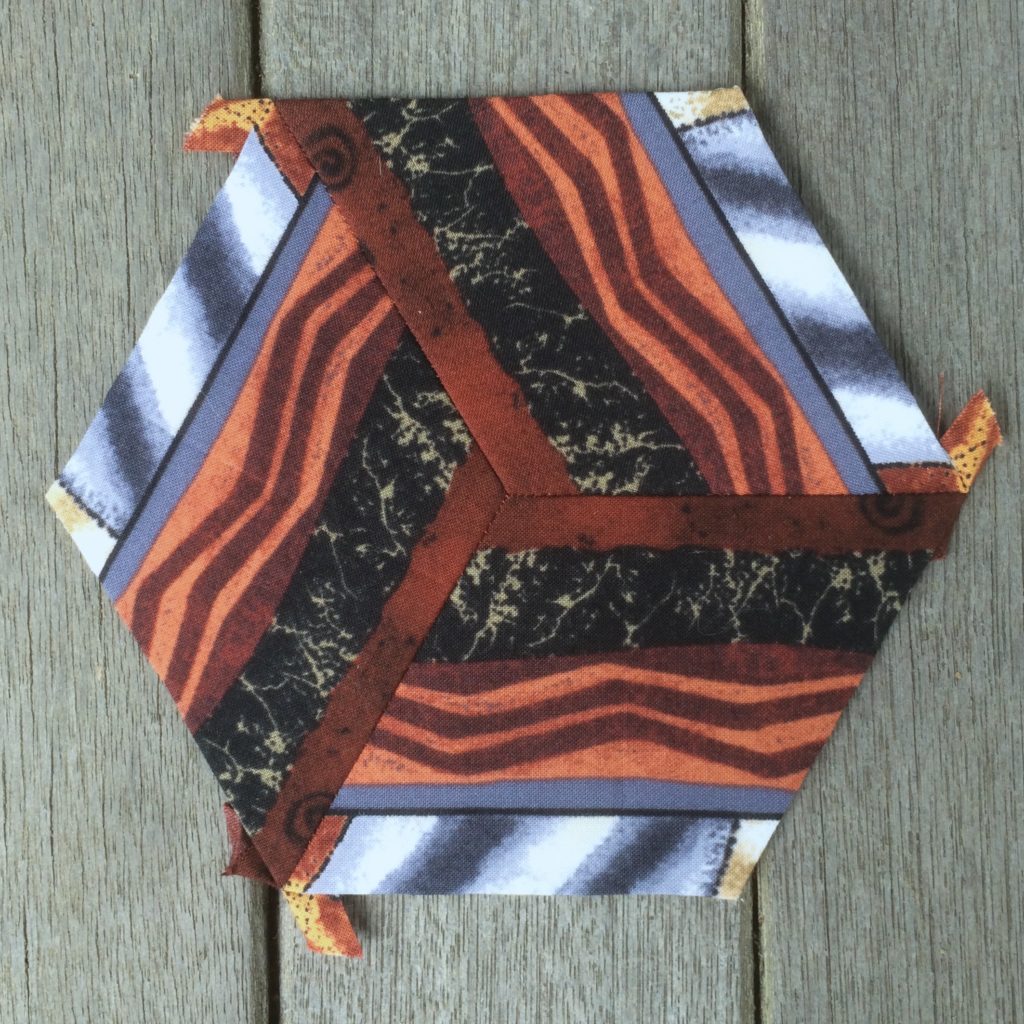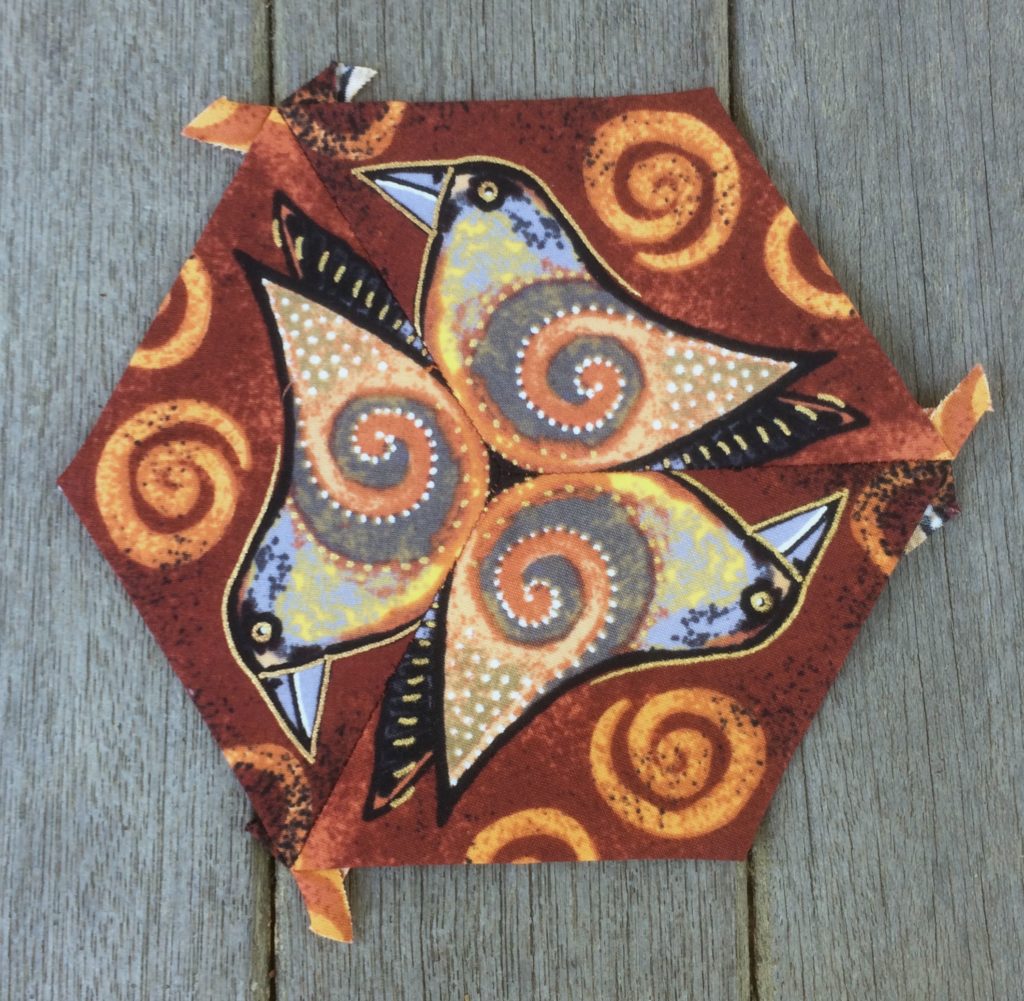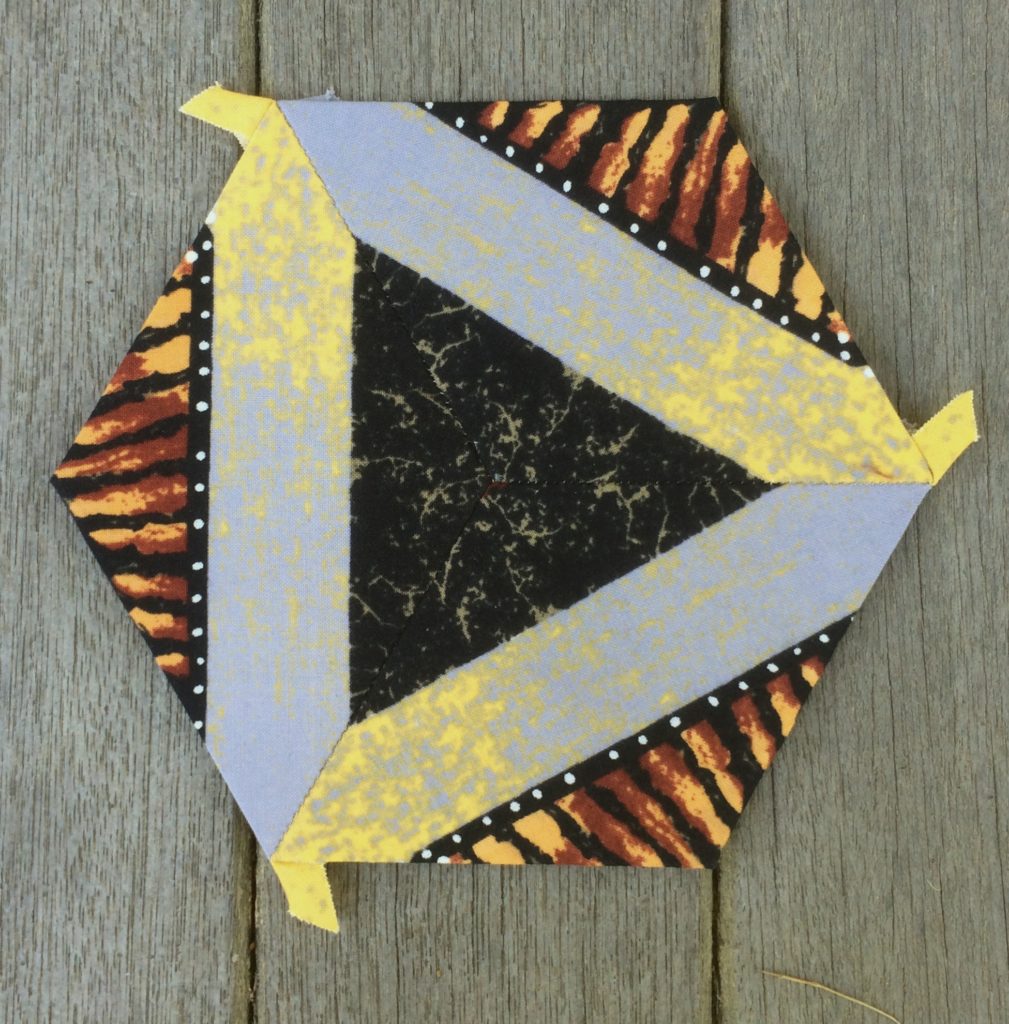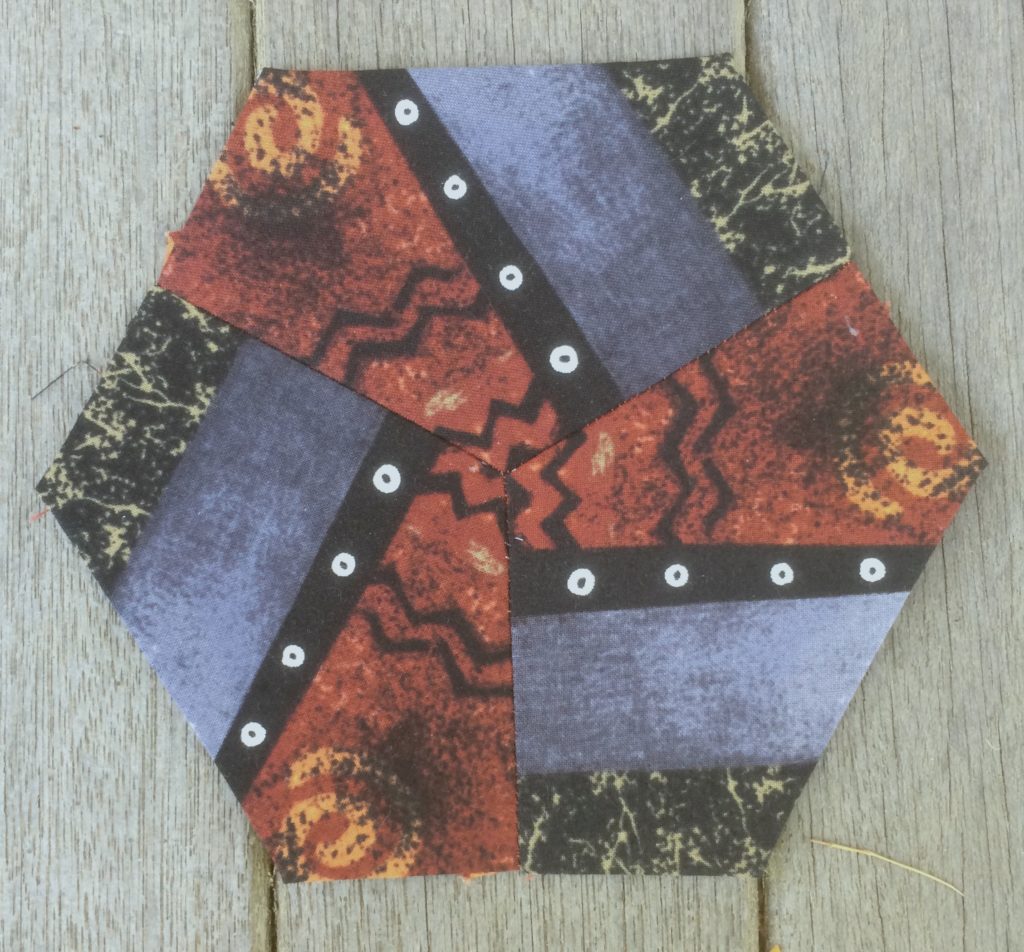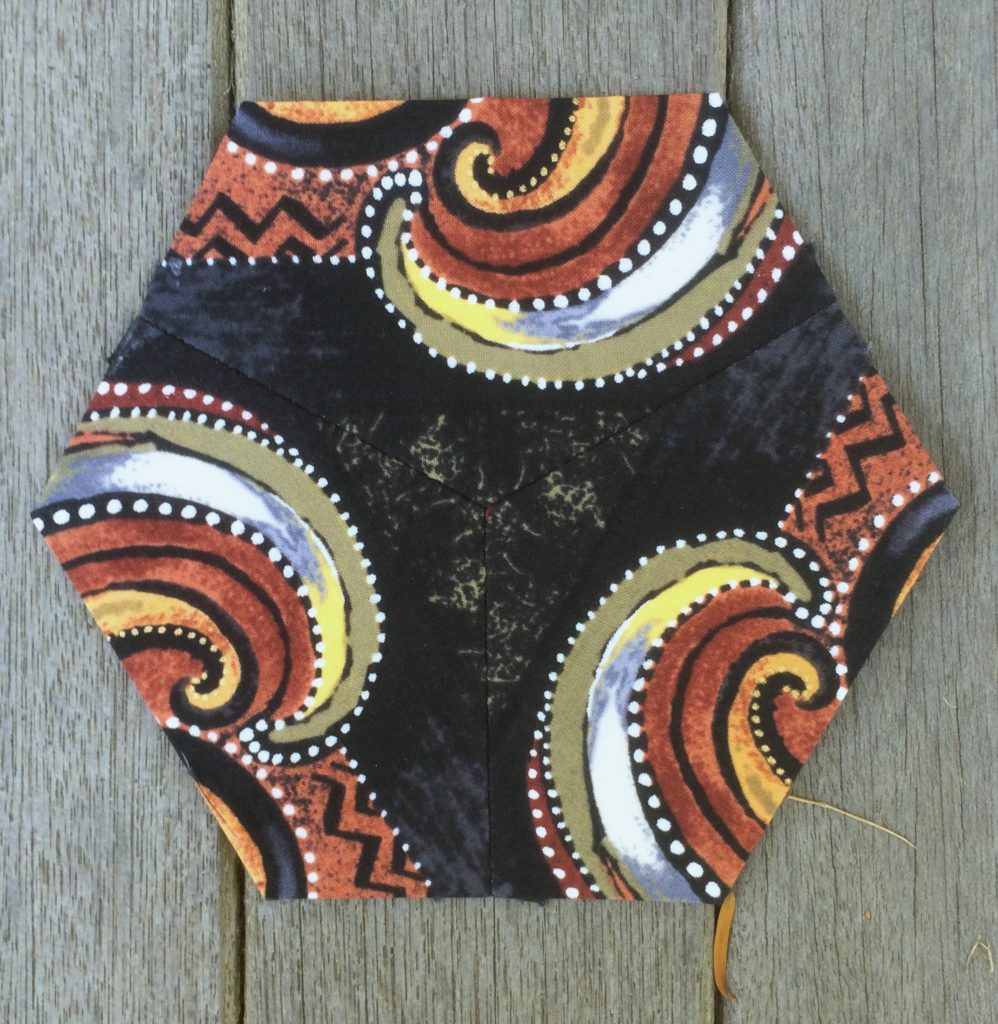Last week I attended the U.S. Go Congress in Boston. I traveled via train to and from Boston. I knew that this was going to be an ideal opportunity to travel with my EPP handwork. I am currently working on a quilt based on the Glorious Hexagons group on Facebook, and I took that work with me to the Go Congress.
I planned ahead of time to have sandwich bags filled with pieces pre cut and pre basted to paper pieces. I prepared over thirty such bags, and my blocks were ready to sew. For travel I packed my sewing supplies into a small carry on bag that would fit easily at my feet on the train.

I packed my sewing supplies in one #2 Tupperware Modular Mate box, and I packed my sandwich bags with precut pieces in another #2 Tupperware Modular Mate box.
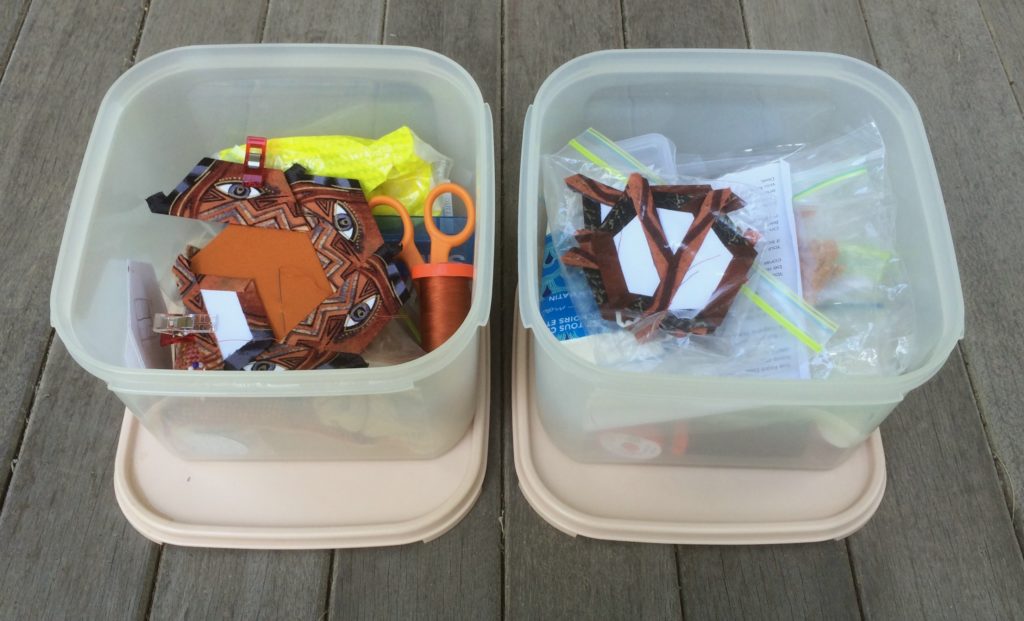

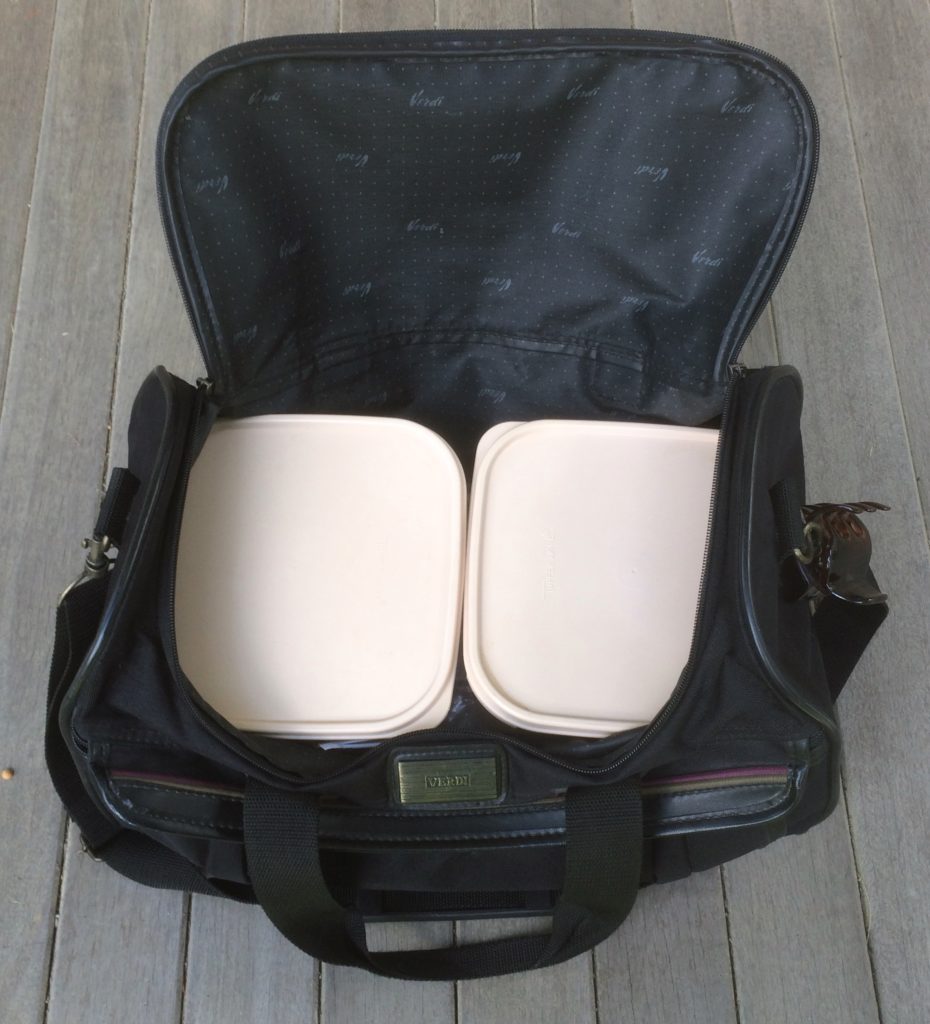
These boxes fit nicely into my carry on bag leaving enough room for a couple of books, my iPad, a charging cable, and some snacks.
I completed a few blocks on my way up to Boston on Amtrak.
The real stitching started in ernest once I got to the Go Congress. I played a game in the U.S. Open each morning, but my games were fairly quick, about an hour each. After finishing my morning game I would move from the playing area into the adjoining lounge area where I would sit and stitch, often talking with friends, and sometimes watching a game review.

A few days into the Go Congress I had finished piecing ten or more hexagons. The one on the top of the pile above happens to be my favorite one that I pieced during the congress. I am planning to make a few more of this block taking advantage of the linear elements in the Embracing Horses Panel Fabric.
It wasn’t all go playing and stitching last week. There was plenty of eating as well. I deviated from my usual Vegan eating philosophy to take in a bit of dairy as well as some sea food.
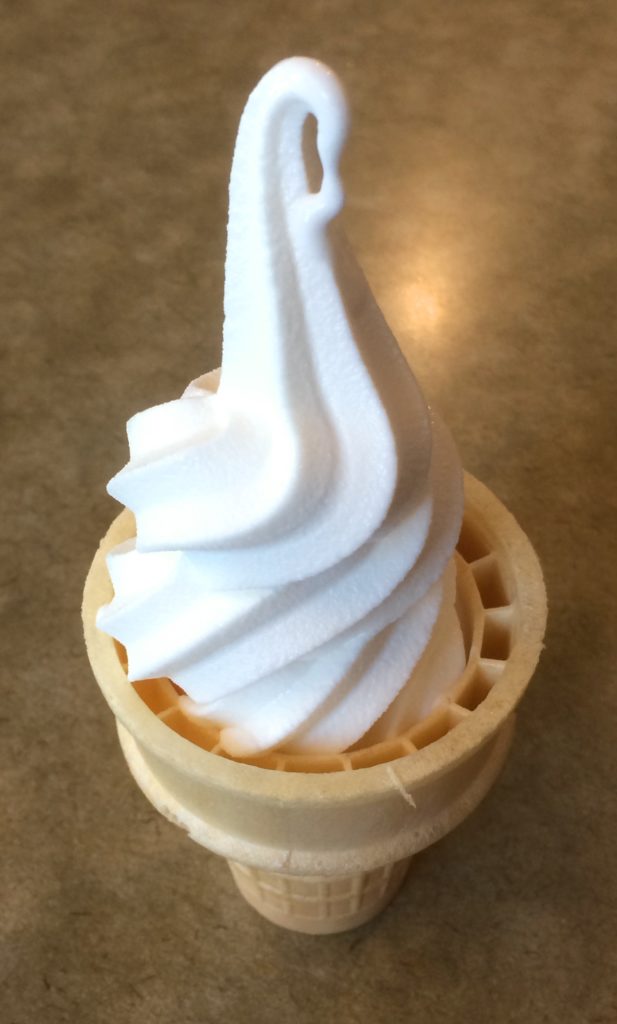
The Boston University cafeteria had soft serve in the evening. I usually had a cone after the evening meal, and sometimes a second after sitting and consuming the first cone while talking with go friends.
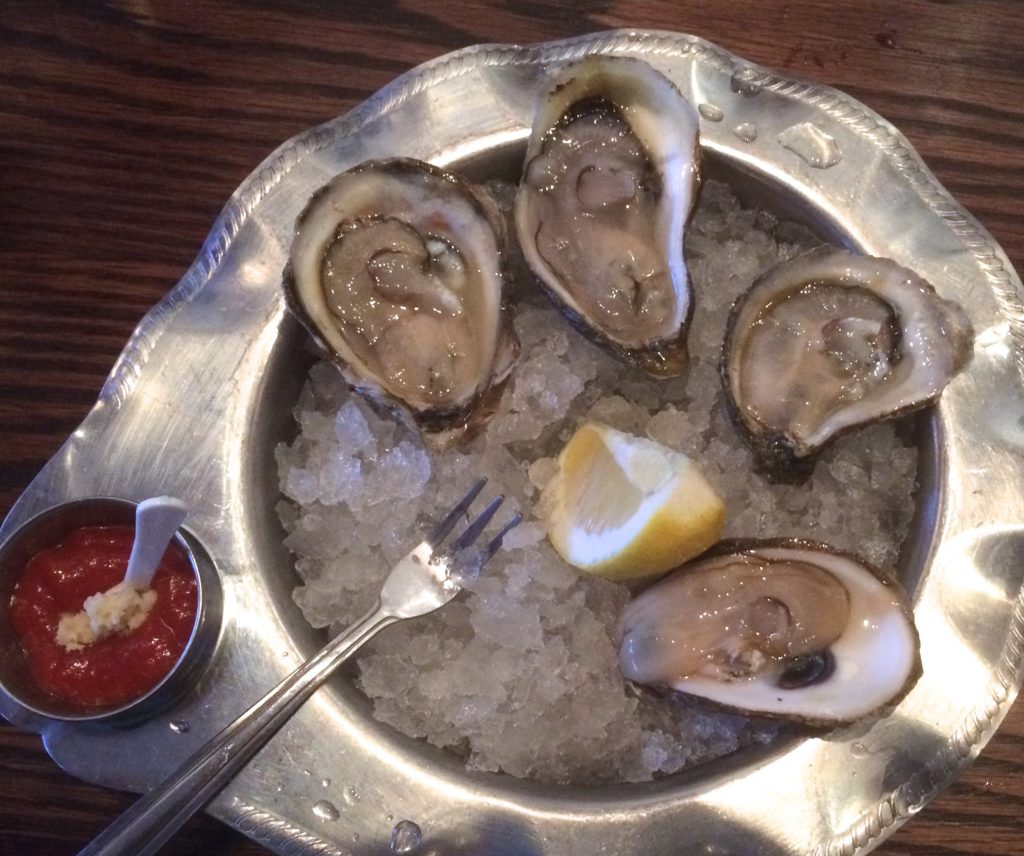
My go friend Larry and I enjoyed a lobster roll for lunch. We tried to get into Neptune Oyster for dinner, but there was an hour and a half wait for a table for two. So we sauntered down the street and got pulled into another seafood restaurant, the name of which escapes me. There I had four blue point oysters. I would have had more, but they were quite pricey.
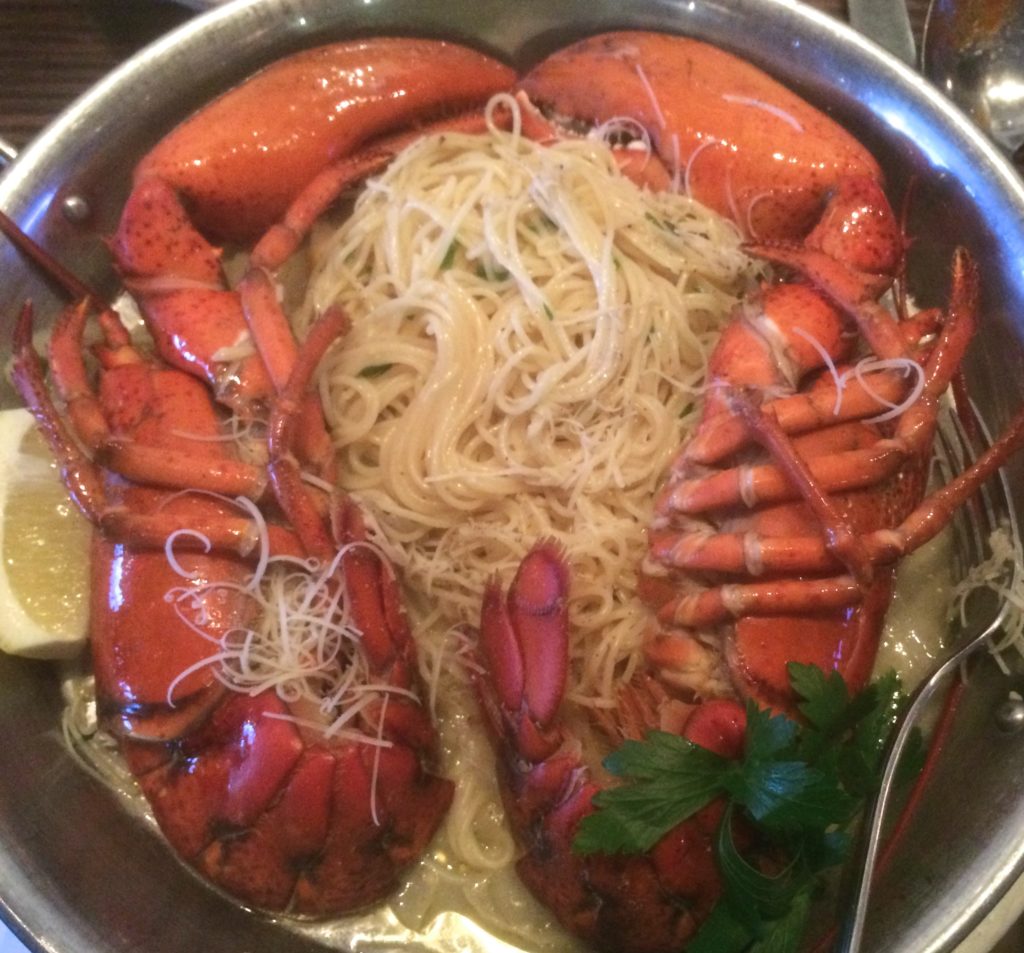
I also had a pound and a half lobster over linguine. The tail meat was easy to get to since the lobster had been cut in half. I had to struggle with the claws though, but it was worth it. They had what they called a “lazy man’s lobster: which had been shelled and served with linguini. Perhaps I should have gone that route. I was very glad I did not have to meet the lobster before it arrived at my plate. Even though I was never an ethical Vegan, I could not help but learn a few things that give me pause when I consume animal products.
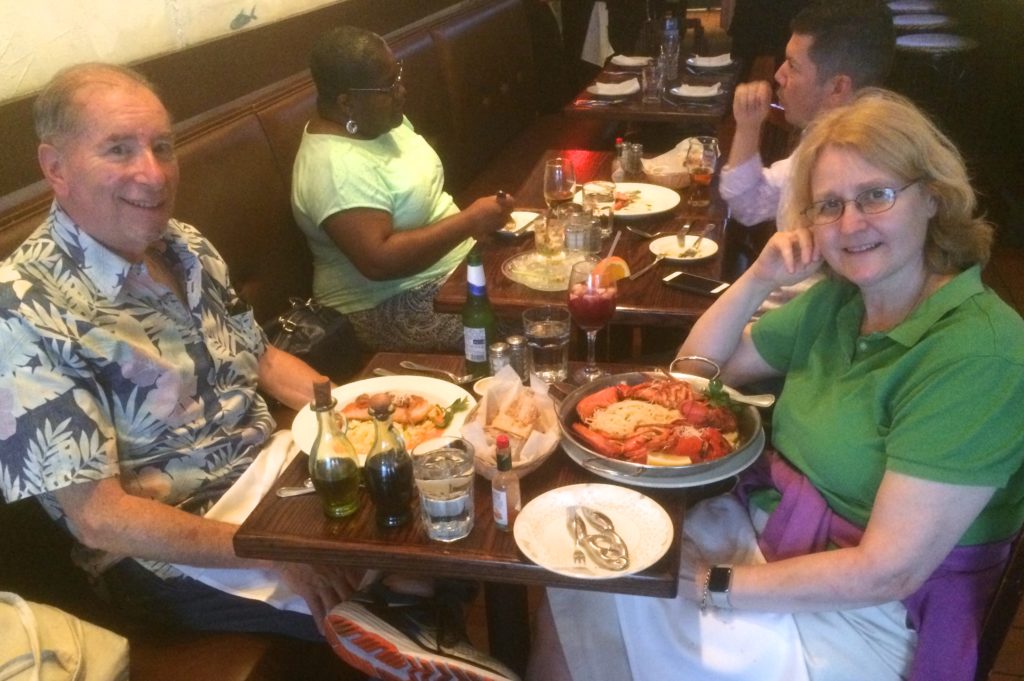
When I took the photograph of my food the waiter offered to take a photograph of my dining companion and myself. Larry and I had a great time on the Wednesday day off in the middle of the week taking in four museums, lunch, and dinner off campus.
Back to the stitching…
I completed thirty of the basted blocks that I took with me. On the way home I traveled with two go friends on Amtrak. One was headed for Philadelphia and the other down to Virginia, perhaps getting off at DC. We started off in the regular coach area, but decided to try our luck getting a club car table. We managed to snag one. That made the remainder of the trip so much more enjoyable. Allan, a strong Dan level player, reviewed the one game I had recorded at the congress. He also reviewed a game for Neil. The three of us were able to talk easily at the table and had a great time chatting the hours away.
After the game reviews were over I pulled out my stitching and worked while we talked. The conversation centered on my hexagon work for awhile. I had come prepared with some photographs marked as favorites on my iPad. I knew this would make it easier to explain to people what I was doing, and where the work was heading.
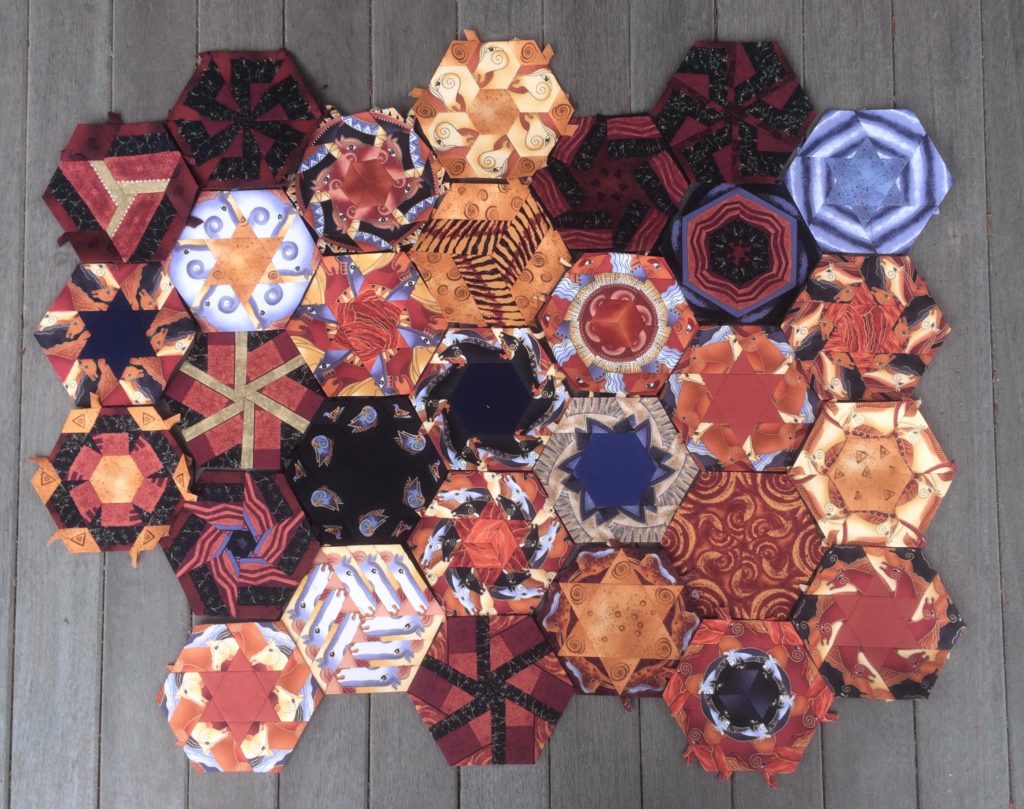
Here are the thirty blocks that I completed during my trip.
I still have 25 blocks that I had previously finished that that have yet to be shown. I will show them over the next week in groups of ten. So the blocks above will have to wait for their individual presentation until after I have presented the hexagons from the seventeenth and eighteenth decades plus five more blocks. The blocks above represent hexagons 186 through 215.
Though I will not show individual blocks up close I will say how many of each type of block I completed and show the corresponding pile of blocks.
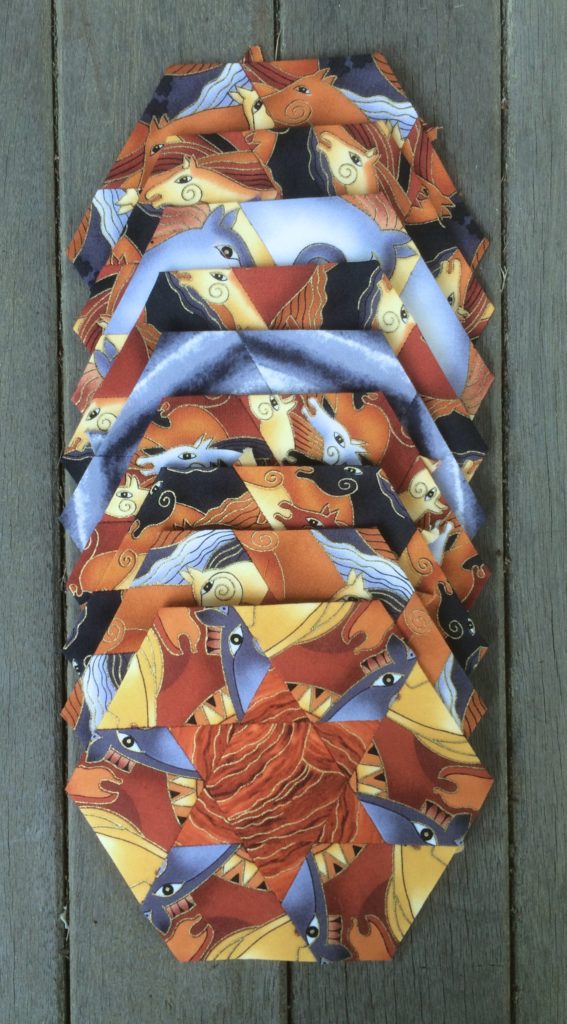
I made nine blocks of #48 Jeannie.

I made five blocks of #13 Judy
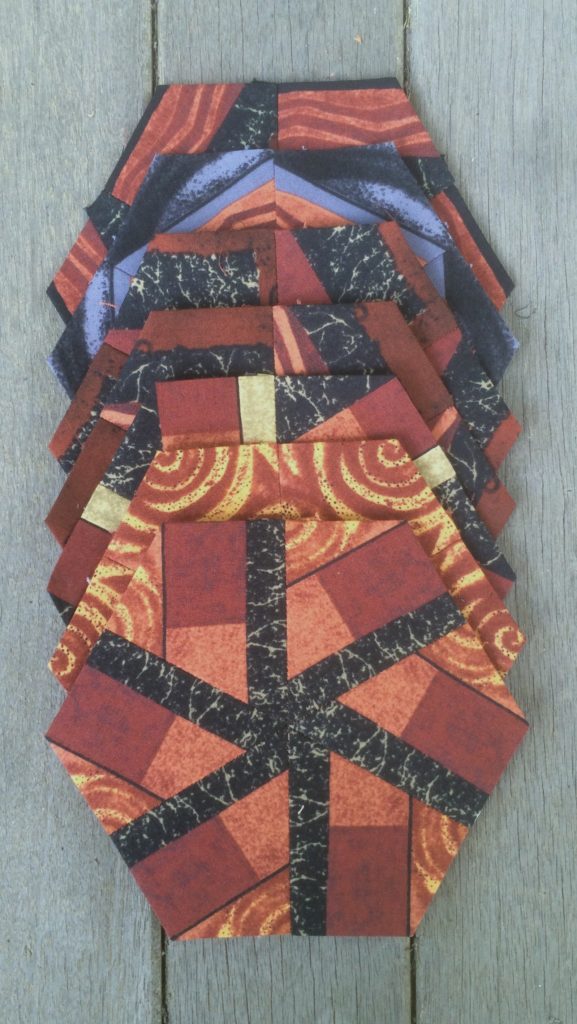
I made seven blocks of #9 Doris
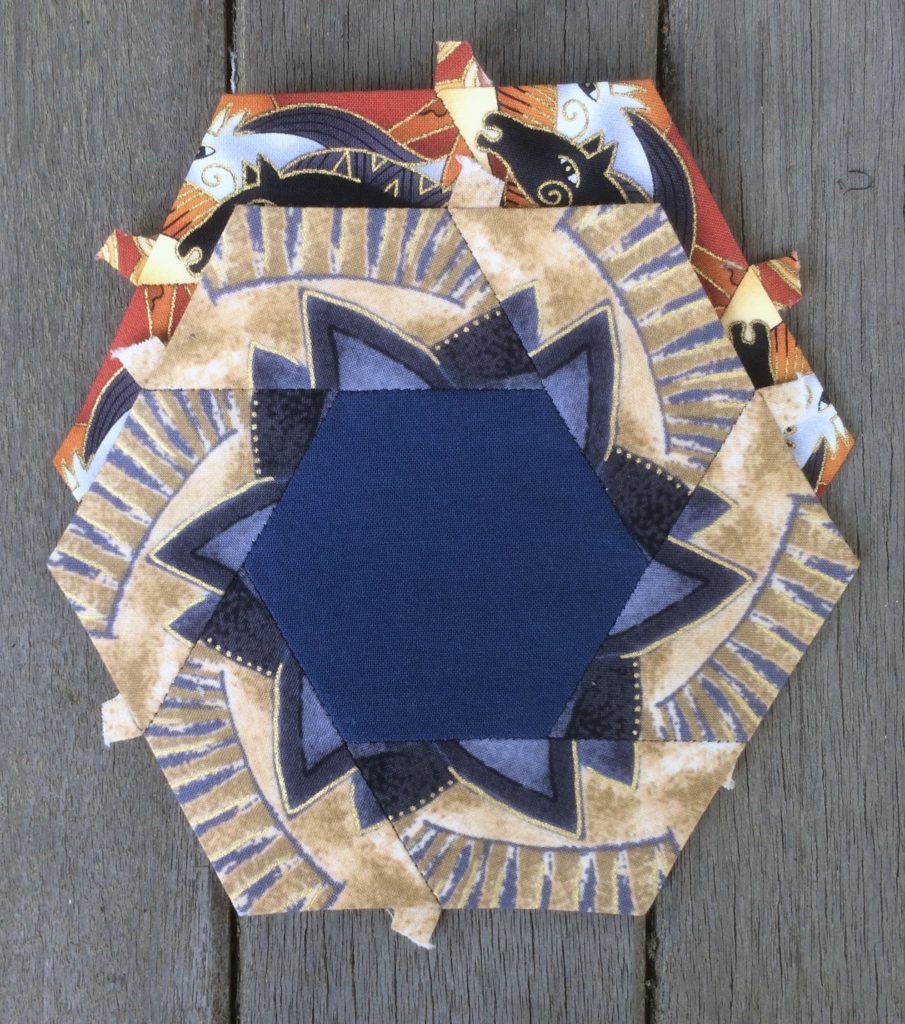
I made two blocks of #33 Kerry

The remaining blocks were singletons consisting of one of each of the following:
#29 Bev
#11 Susan
#8 Marina
#2 Carol
#1 Marie
#34 Christie
#10 Kelly
Kelly is the one shown in its entirety on the above pile. I really like her with these fabrics. I liked using a fabric with a linear feel for the central pieces of Kelly. I will be making a few more of these with other patterns.
I really had fun at the Go Congress this year, and one of the reasons I had such a good time was that I was able to keep stitching through the event.
Next year the congress will be in San Diego. I’ll be getting some guide books ahead of time and will perhaps go out three days early to make it into a real vacation.
